

European
Nuclear Society
e-news
issue 34: November 2011
Before the tragic events of Fukushima unfolded before our television screens some six months ago, the renaissance of nuclear energy had been a regular topic of conversation. Today, in certain quarters, it’s more the regression of nuclear energy than its resurgence that is talked about. Indeed, in some countries and sections of the media there is even talk, largely politically motivated, of replacing or seriously reducing the contribution of nuclear to the energy mix. In France, Europe’s premier nuclear country, pre-electoral campaigning has thrown up the unlikely, but potentially vote-winning scenario, of reducing from 75% to 50% the contribution that nuclear makes to the country’s energy provision by around 2025. Conversely, in many countries new build momentum has been maintained and the future remains bright for nuclear energy. Well, whatever opinion you hold, it cannot be denied that Fukushima has re-shaped the political agenda, mobilised public opinion and upped the ante in the global nuclear debate. I recently heard a senior executive from another industry speaking about the importance today of crisis management. He referred to how his industry was redoubling their efforts to avoid suffering a “Fukushima moment.” It would appear that the impact of the accident, combined with the scale of the resulting media frenzy and increasingly polarised political thinking, have helped establish the word Fukushima as part of our shared lexicon. It has become synonymous with unmitigated disaster and human error; a metaphor for the helplessness of man when compared with the awesome power of Mother Nature. The term “stress tests” (“safety risk assessments” is perhaps a more accurate and less contentious term) could also soon invade our common vernacular. The watershed events of 11 March have, whether we like it or not, changed things.
But how has the accident impacted upon the nuclear research community in real terms? To what extent has the fundamental drive and direction of research changed? Well, the fundamental objectives of learning the lessons of Fukushima, of putting them into practice and of re-establishing the nuclear industry’s safety credentials, have led to a re-focusing of our research efforts. There must be clear evidence that the lessons have been learnt. The stakes have been raised, and so has the bar of acceptability. To simply reply that “our plant is nowhere near the sea or an earthquake zone” is unacceptable. This complacent new take on nimbyism cuts no ice post-Fukushima. The whole nuclear community shares a common responsibility. Essentially, researchers have been forced to consider new potentially dramatic scenarios, like the Fukushima one where two unprecedented natural disasters combined, against all the odds, to knock out the grid, cause a catastrophic loss of back-up power and create a nuclear accident equivalent to a “7” rating on the INES scale. Researchers now have to think the unthinkable and imagine the unimaginable to ensure that nuclear installations are as safe as it is possible to be against all eventualities. This is one of the major challenges facing the nuclear research community today. And there is no time to lose if confidence in certain quarters is to be restored.
ENS NEWS would like to invite readers to share their personal experiences of how grass roots research has - or hasn’t - changed since Fukushima wrote a new chapter in the history of nuclear energy.
The ENS News section of this bumper N° 34 edition kicks off with the traditional Word from the President, in which Professor Slugen shares his impressions of the recent Secure Energy Supply 2011 (SES 2011) conference that took place in Bratislava, Slovakia. This conference attracted many top-level speakers, including national politicians, and was made possible by close co-operation between the Slovak Nuclear Society and the Slovak Nuclear Forum. In it Professor focuses on the vital subject of security of energy supply and on the implications of meeting energy supply with demand - both before and since the Fukushima accident.
The High Scientific Council of ENS then provides readers with a detailed analysis of the events leading up to, during and after the accident at Fukushima, with special emphasis on the causes, on reactor design and on what technical lessons can be learnt from the catastrophe. Finally, the spotlight is put on Euratom education and training measures carried out under the auspices of the Seventh Framework Programme (FP7).
The major ENS conferences highlighted in the ENS Events section are PIME 2012, RRFM 2012, TopSafe 2012, TopFuel 2012 and ENC 2012.
This autumn edition also features a host of contributions to the Member Societies and Corporate Members sections. These include papers on new technology patented by the Centre for Technology Transfer and pre and post-natal irradiation research carried out by SCK-CEN; technical seminars, conferences and artistic competitions from Romania; a new book published in Austria on Fukushima; the latest information courses offered by the Karlsruhe Institute of Technology (KIT) and the Frédéric Joliot/Otto Hahn Summer School, in Germany; events organised in Slovenia and Spain; the WANO Nuclear Excellence Awards; an important isotope production milestone at NRG, in Holland and other news from corporate members such as ONET technologies and Westinghouse. I apologise if I have omitted any contributions, but they really were too numerous to mention individually!
The YGN Report section features reports from YGN chapters in Poland and Spain.
Finally, the ENS World News section features a selection of recent NucNet news reports and a detailed run-down of the many ENS conferences in the pipeline.
I hope you enjoy reading what is probably the largest ENS NEWS ever produced….a tribute to the dynamism and commitment of ENS members. Many thanks for your great support for ENS NEWS.
|
http://www.euronuclear.org/e-news/e-news-34/presidents-contribution.htm


I recently had the honour of delivering an opening address, in my capacity as President of the Slovak Nuclear Society (SNUS), at the 8th edition of the international conference Secure Energy Supply 2011 (SES 2011). Tibor Mikuš, President of the Slovak Nuclear Forum (SJF), also gave an opening address. The conference agenda revolved around a series of key sessions dedicated to fundamental issues of interest not only to readers of ENS NEWS, but also to the whole European nuclear science community. These included EU energy and climate change policy, nuclear safety (including a debate on the lessons to be learned from the Fukushima accident), nuclear research, education and innovation and the role of new build in ensuring a more secure energy supply.
The importance of this international conference, which took place in the Slovak capital, Bratislava, was reflected by the participation of an impressive array of top-level speakers, that included the President of Slovakia, Ivan Gašparovič; Juraj Miskov, the Slovak Minister of the Economy; Maroš Šefčovič, the Vice-president of European Commission and Commissioner for Inter-institutional Relations and Administration; Peter Mihók, President of the Slovak Chamber of Commerce and Industry and Deputy President of Eurochambres Brussels; Paolo Ruzzini, Director general of the Slovakian utility, Slovenské Elektrárne; and Miroslav Lipár, Head of the IAEA’s Operational Safety Section. A total of 94 experts from Slovakia and 12 other countries participated in the conference.
With global energy demand rising and recent history having taught us the crucial importance of having a secure, adequate and above all independent supply of energy, the title of the conference was especially appropriate. Indeed, one major area of consensus that emerged from the debate was the recognition that society can only develop sustainably if a secure and reliable supply of electricity - for industry and consumers alike - is assured, and if at the same time the effects of climate change are mitigated. The importance of an integrated EU energy and climate policy was debated at length, with the emphasis on the development and deployment of low-carbon technologies very much to the fore. This approach was enshrined in The EC’s Green Paper of 8 March 2006 entitled: European Strategy for Sustainable, Competitive and Secure Energy. The so-called Agenda 20/20/20 later confirmed the significant role of nuclear energy as a low-carbon technology in the European energy mix and reinforced the importance of this integrated approach to energy and climate change policy. Given the existing level of scientific knowledge, it is obvious that we cannot realistically expect our environmental goals to be met if nuclear energy is replaced in the coming decades. Many readers are involved in front line of research that contributes directly to improving security of supply while combating climate change.
Long before the tragic events that occurred in Fukushima, safety had always been, and will always remain, the nuclear community’s top priority. During the conference the fulfillment of more and more demanding safety standards was underlined as another precondition for the further development of nuclear power. Delegates expressed their confidence that the so-called stress tests (risk assessment tests) that have been carried out at nuclear power plants in the EU member states and neighboring countries in the aftermath of Fukushima will contribute to increasing nuclear safety in Europe - a region where, it must not be forgotten, nuclear energy accounts for around 30 % of in the energy mix.
Slovenské Elektrárne, a member of the Enel group, operates nuclear power plants in the Slovak Republic and confirmed that nuclear safety is not only the highest priority but literally a legal requirement for them. Nowadays, at a time when nuclear power worldwide is being strictly reassessed, I think we can accurately say that the four nuclear units operated in Slovakia and the two units under construction at Mochovce are significantly helping Slovakia to meet its CO2 emissions reduction obligations, while at the same time maintaining the highest of standards when it comes to ensuring nuclear safety and ensuring a reliable supply of electricity for the country’s future sustainable development. The same can be said for many other nuclear installations across Europe.
Such a high level of reliability and safety can only be achieved in the future, however, if an adequate number of highly skilled and experienced experts is available sustain it. The delegates at SES 2011 were unanimous that specific education in this field is an absolute pre-requisite. The whole nuclear community, working side by side with academia, has a responsibility to ensure that there is a constant flow of educated, highly-trained and motivated young people to maintain the nuclear energy sector. Finally, another equally important goal to which the conference undoubtedly contributed is the need to maintain a continuous transparent and open dialogue with all stakeholders on all aspects related to security of supply issue.
Vladimír Slugen
President of ENS
http://www.euronuclear.org/e-news/e-news-34/hsc.htm


The High Scientific Council (HSC) of ENS recently presented a position paper on the causes, consequences and lessons to be learnt from a technical perspective from the nuclear accident that occurred at the Fukushima Daiichi nuclear power plant in the wake of the earthquake and tsunami that struck Japan on 11 March 2011.
ENS NEWS is pleased to be able to share this position paper with its readers.
On 11 March 2011, Japan was hit by an earthquake and tsunami of exceptional magnitude. These two inter-connected events triggered a major nuclear accident at the Fukushima Daiichi nuclear power plant. The power plant is situated to the South of Sendai, on Japan’s North Eastern coast. It contains 6 boiling water reactors (BWRs). Three of them were operational at the moment when the earthquake struck.
The plant’s reactors were built over a number of years: the first one, which has a capacity of 480 MWe, achieved criticality in 1970. The subsequent units, with an increasing capacity ranging from 780MWe to 1,100 MWe, were connected to the grid between 1973 and 1979. Units 1, 2, 3 and 4, which were damaged by the accident, are BWR GE Mark I type reactors designed by General Electric.
In a BWR the water is allowed to boil in the reactor’s primary circuit under a pressure of 70 bars. The steam that is produced at a temperature of 285°C is conveyed directly to the turbines that operate the electricity generators. After passing through the turbine the steam is condensed in a device that brings it into thermal contact with a heat sink, which in the case of Fukushima was sea water. So, this kind of reactor has a single, long closed circuit, which leaves the confinement area and the reactor building en route to the turbines and the condenser. The confinement area consists of a dry well around the reactor core that is made out of steel reinforced concrete and has a small volume of 11,000m-3 filled with an inert gas (nitrogen), and a wet well, which is a torus-shaped pool that acts as the reactor’s water reserve and condensation chamber. The whole thing is enclosed in the reactor building, which also contains a storage pool in which spent fuel removed from the reactor core is submerged (Figure 1).
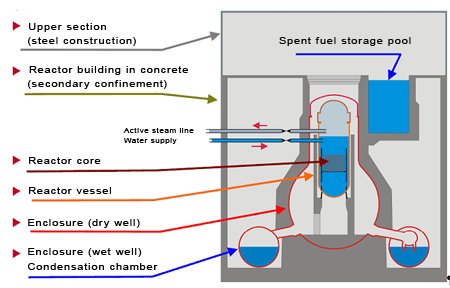
Fig. 1: The main elements of a BWR GE Mark I reactor
The epicentre of the earthquake, which registered 9 on the Richter scale, was around 100 km off the coast of Japan. It provoked ground accelerations of 0.37g, whereas the nuclear power plant was designed to resist accelerations of up to 0.3g. In spite of this, the installations appear to have resisted the earthquake well, thanks to margins of security that are foreseen by the rules governing para-seismic construction. The earthquake caused the automatic shut-down of the reactors by the insertion of safety rods. It also caused the loss of the plant’s external electricity supply. At this stage the back-up electricity supply (diesel generators) started working correctly, thereby enabling water circulation within the reactor’s primary circuit to be maintained and facilitating the cooling of the reactor once it shut down. Unfortunately, the tsunami that followed the earthquake and struck the coast around one hour later reached an estimated height of 14m, which is far higher than that of the 6.5m high dikes. The tsunami swept away the 4 marine pumping stations that supply the condenser and flooded the diesel generators, leaving the reactors without any electricity supply or heat sink.
What followed was a race against time to avoid the overheating of the reactors. In fact, even if the chain reaction is stopped and there are no more neutrons in the reactor cores, the residual power generated by the fission products must still be removed.
|
The accident scenario progressed slowly. Right from the start, the main objective was to avoid damage to the fuel. To achieve this, the core had to be kept underwater. Initially, the steam produced by the reactors enabled a small emergency turbine to function and allow the primary circuit water to flow. In the absence of a heat sink this solution only enables calories to be transferred from the core to the torus-shaped pool in the wet well. The water is vaporised in the core and then condenses in the wet well, where the average level and temperature increase accordingly. During the initial hours after the earthquake struck, the water level in the reactor was maintained with the addition of water from a surge tank. This process continued until the surge tanks were empty. The wet well is designed to resist a pressure of only 4 bars and in order to limit the pressure in it the operator, TEPCO, was obliged to release some steam into the reactor building.
Once the reserve water had been used up the operators had no choice but to continue to vent steam into the reactor building. The water level in the reactor vessel then began to drop and the reactor core was exposed. No longer cooled by the water in the reactor vessel the fuel rods broke up, releasing the volatile fission products that they had hitherto contained. At the same time, because the temperature of the cladding reached 1200°C, the water triggered the oxidation of the zirconium in the cladding, which in turn produced hydrogen mixed in with the water vapour.
The operators attempted to save the reactor by voluntarily releasing steam, under controlled conditions, first to the confinement area and then into the upper section of the reactor building. At this stage, the steam released outside the plant was already radioactive. In addition, the hydrogen in the water vapour was released when the reactors were vented. The hydrogen appears to have accumulated at the top of the reactor buildings. Once the percentage of hydrogen in the atmosphere reached 4% it became explosive.

Figure 3: Hydrogen explosion at the Fukushima power plant
A few days after the earthquake hydrogen explosions occurred in units 1, 2 and 3.These blew away the upper sections of reactor buildings 1 and 3. Although the explosions were spectacular they didn’t appear to seriously damage either the confinement areas or the reactor vessels.
However, the venting of reactor 2 occurred too late, which caused a rise in pressure and the rupture of the wet well. This led to the release of a significant amount of contaminated water, which spread to the plant’s technical galleries.
Drastic steps were then taken to cool down the reactors, by whatever means possible, using the only remaining source of water available - sea water. Sea water was, therefore, released into the reactor vessel and the dry well. This method of supplying water, called “feed and bleed,” is carried out at atmospheric pressure; the steam from the boiling of the water was released continuously.
At the same time, the spent fuel storage pools also started to encounter problems. The water in the pools must be cooled by a process of heat-exchange in order to avoid the overheating of the fuel due to its residual heat. Once this heat-exchange could no longer be guaranteed, the water level in the pools began to drop, possibly exposing the spent fuel, which led to the potential deterioration of the fuel cladding and to the release of volatile fission products into the atmosphere. The dosage levels around the reactors were too high to allow the operators to intervene on the spot.
Three months after the accident access to sea water for use as a heat sink was still impossible. The technical galleries and the reactor pools were still full of contaminated water.
Contrary to the accident at Chernobyl, it was primarily the volatile elements that were released at Fukushima: Kr 85, (radioactive half-life T=1 year) + isotopes of Xe, I 131 (T=8j), Cs 137 (T=30a) and Te 132 (T=3j).
The measurements of radioactivity made in the immediate vicinity of the plant show clearly the maximal levels of radioactivity resulting from the venting of the steam and the hydrogen explosions.
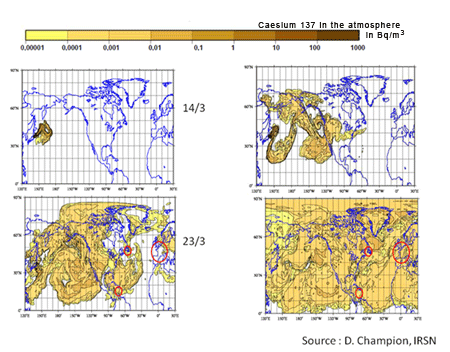
Figure 4: The dispersal of the radioactive cloud
The radioactive cloud that had been formed by successive bursts then dispersed (Fig. 4). Luckily, during the acute phase of the accident the wind was blowing primarily from the West, towards the ocean. Then atmospheric dispersal took over, homogenising over a period of fifteen days the concentration of radioactive gas in the Northern hemisphere. The accident would have been very different had the wind blown instead towards Tokyo…
The accident at Fukushima triggered a release of caesium into the air, which was measurable everywhere in the Northern hemisphere. During the 1960s and the 1980s, the concentration of caesium in the air was at first due primarily to the carrying out of nuclear tests. Later it was associated with the Chernobyl accident. As was the case with these previous episodes of pollution, a decrease in the peak level resulting from the Fukushima events was observed. It occurred at a rate consistent with that of caesium depletion from the atmosphere provoked by rainfall; and it occurred within a time period of around 1 month.
The local radiological consequences registered are modest: 30 people were irradiated after receiving a dose superior to 100 mSv, but their lives are not in danger.
Radioactive measurements carried out in the environment surrounding the plant indicated spikes associated with the explosions. The maximum dose level registered around the reactors (at the entrance to the plant) was around 10 mSv/hour, and 400 mSv/hour close to reactor N° 3. On 16 March, five days after the accident, the level at the entrance to the plant was 1.5 mSv.
As far as leaks into the sea were concerned, the radioactivity measured close to the plant during the early stages of the accident was primarily from iodine 131. Thereafter, it was mostly caesium 137 and 134. However, thanks to dilution this dropped rapidly and had reached the legal permissible limit by the end of April, around one and a half months after the accident. It was later confirmed that because the elements released are naturally soluble in water, they quickly dispersed in the ocean. Contamination of local fishes is and will be detectable, but it is not expected that strong concentrations of iodine or caesium will be registered within the different layers of the marine biosphere.
The radiological consequences of the accident at the regional level resulted from the contamination of the atmosphere by noble gases, such as iodine and caesium, and by the contamination of the soil due to atmospheric fall-out. This contamination of the soil can affect the population due to external irradiation or as a result of the ingestion of agricultural products. The evacuation of the 20 km buffer zone that the Japanese authorities decided to impose avoided any significant exposure of the population to this contamination.
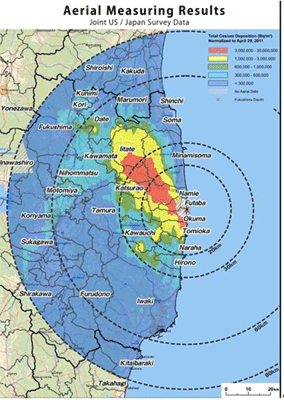
Figure 5: Map of soil contamination (source: website of MEXT)
Unfortunately, the wind did not always blow from the West. For a brief period, on 15 and 16 March, the wind - accompanied by rain and snow - blew from the South East. This created atmospheric fall-out and significant levels of soil contamination from caesium in the so-called “Iitate corridor” – a strip of land around 50 km long and 10 km wide, which registered caesium contamination in excess of 3 million Bq/m2. If no counter measures are taken, this contamination will cause the build-up of radioactive doses, during the first year after the accident, equivalent to several tens of mSv. This will render the soil in an area of a few hundred km2 unsuitable for sustainable agricultural use. Steps to evacuate this corridor, which extends beyond the 20 km evacuation area, have been taken.
The dose received by the public two months following the accident at Fukushima is less than 1 mSv, except for in the Iitate corridor, where it is closer to 10 mSv.
Bearing in mind the dose levels to which the public has been exposed, no significant health effect on the population is expected as a result of the Fukushima accident. There are three reasons why the excessive number of thyroid cancer cases that occurred in the region of Chernobyl should not be repeated in Japan: firstly, the amounts of iodine released so far have been ten times less than those released following the Chernobyl accident; secondly, because the population was evacuated quickly the dose received is very much less; finally, because the Japanese population lives close to the sea it is not deficient in iodine and would probably have accumulated radioactive iodine much less efficiently (in the thyroid) than their Ukrainian and Belorussian counterparts.
In Europe, radioactive Iodine 131 was measured both in the atmosphere (in mBq/m3 at the height of the crisis) and in rain water (measured in Bq/L), but the dosimetric impact was extremely low.
Since the accident at Fukushima destroyed four of the plant’s six reactors, causing major radioactive leaks into the environmental and potential associated health effects, it was given the highest possible rating on the INES scale (7), just as the Chernobyl accident was.
Yes, at least in the early stages of the accident, because of the presence of a secondary circuit containing non-radioactive water. In the absence of a heat sink, the evacuation of the residual power in a PWR can be carried out in the medium-term by evaporating water from the secondary circuit and by releasing steam from non-radioactive water (this is very different for BWRs) until the reserves of water had been exhausted.
If the absence of a heat sink continues and if re-injecting water into the secondary circuit is not possible, the scenario is then identical for both PWRs and BWRs: the temperature and pressure rise in the primary circuit and it is necessary to vent or release radioactive steam, which runs the risk of exposing the core and producing hydrogen.
The consequences of venting are different for BWRs than for PWRs. With BWRs, the containment building is small and internal pressure rises quickly, whereas the very large containment areas around PWRs allow extra time before having to release radioactivity into the environment. Furthermore, for PWRs the risk of producing hydrogen has been taken into account and avoided thanks to the presence of igniters or catalysts that re-combine hydrogen as soon as it is produced. Had the reactor been a PWR it is unlikely that a hydrogen explosion would have occurred.
Finally, the bottom of the reactor vessel of a BWR is pierced by tight channels through which the control rods pass. These represent weak structural points that undermine the tightness of the vessel in the event of a core meltdown. It seems that leaks from the bottom of the vessels occurred on the Fukushima reactors. By contrast, the bottom of a PWR reactor vessel is not pierced, which probably affords it greater resistance to attack from corium.
With third generation reactors, like the EPR, there probably wouldn’t even have been any release of radioactivity outside the containment area because this type of reactor is conceived to maintain containment even in the event of core meltdown.
Clearly, the accident at Fukushima is unacceptable to the public. The operators did not commit any major errors in the way they handled the crisis. Perhaps they could, however, have avoided core meltdown by deciding very quickly to use sea water to cool the reactors. But this was probably a very difficult decision to make after an earthquake and tsunami of such magnitudes. For technicians and scientists the issue of responsibility should be considered as follows: were the events that triggered the accident (the earthquake and the tsunami) of such an exceptional magnitude that the risk of them occurring was probably an acceptable one to take (in which case the extraordinary bad luck associated with the events absolves the technical community from any blame), or was the probability of their occurring sufficiently high to have foreseen measures to protect against such a risk (in which case the Japanese technical community was wrong not to have foreseen them).
Seismic risk can be calculated quite accurately. The Gutenberg-Richter Law, which links exponentially the magnitude and occurrence frequency of an earthquake, is a universal law. In principle, it enables the probability of strong earthquakes to be evaluated by observing weak earthquakes and then extrapolating. Assessing the risk of a tsunami occurring is more difficult! It is, of course, linked to the aforementioned earthquake, but how the continental shelf and the coastline are configured have a fundamental effect and in turn make evaluating the probable height of the wave much harder to do.
Gigantic tsunamis frequently occur in the Gulf of Alaska (one of 60m high occurred in 1899 and one of more than 70m in 1964!). Unfortunately, Japan doesn’t fare much better (a 38m high tsunami occurred in 1896, another of 12m followed the Kanto earthquake of 1923 and another of 29m followed the Sanriku earthquake of 1933). But waves strike in one place first and then in another. This begs the question of what the probability is, a priori, of a tsunami of above a given height (e.g. the height of the dikes, i.e. around 6.5m) striking Fukushima? A recent report (Ref. T. Annaka et al.: A method of probabilistic tsunami hazard analysis, earthquake engineering symposium, 2006) gives the following reply: the probability is around 10-4/year, with a large degree of uncertainty factored in. This means that at Fukushima a few tsunamis higher than the one that struck Fukushima could occur over a period of 10,000 years.
Since we know that the acceptable level of risk of a serious accident occurring (core meltdown) is considered by nuclear safety authorities in the West (and in Japan) to be around 10-4/year for Generation II reactors and 10-5/year for Generation III reactors, and that the probability of radioactivity being released into the environment is even smaller, we can but conclude that there was inconsistency between the safety doctrine at Fukushima and its actual application. The design basis of the dike was clearly insufficient and the Japanese technical community must be held responsible.
After the accident the water used to cool the reactors, which is currently being stored in the plant’s pools and technical galleries has to be decontaminated. Tens of thousands of m3 need to be treated and extracting the caesium from salt water is no easy task, because the water contains a lot of sodium, an element with chemical properties close to the ones of caesium. The soil in the vicinity of the plant and inside the Iitate corridor will also probably have to be decontaminated, either by descaling a few centimetres from the surface or by some other technique yet to be defined. Finally, the damaged reactors will have to be dismantled under what are difficult radiological conditions.
Sadly, the accident at Fukushima has a lot to teach the technical community. For current and existing reactors we will need to re-consider the risk of natural disasters, in particular tsunamis. Cooling methods will have to be diversified, as will ways of providing emergency back-up power. Passive safety has to be promoted in the reactor design and the reactors themselves will require better instrumentation.
The accident at Fukushima will have an effect upon the development of nuclear worldwide because it occurred right in the middle of the nuclear renaissance - and could stop its momentum. The consequences will probably be limited in China, India and Russia, countries that have confirmed their need for nuclear and their desire to develop it. On the other hand, the consequences have already been far-reaching in the West - Germany, Italy and Switzerland have reviewed their nuclear policy and other countries may follow a similar path. The debate about the future of nuclear, which has been given new impetus as a result of the accident, promises to be heated one. Hopefully, it will be a reasonable debate - one that is free of emotion and takes equal account of the advantages and disadvantages of this energy option.
http://www.euronuclear.org/e-news/e-news-34/Euroatom.htm

One of the main goals of the Euratom research and training programmes1 is to contribute to the sustainability of nuclear energy by generating knowledge (research) and developing competencies (training). Euratom training programs, in particular, aim to continuously improve and disseminate the nuclear safety culture, in compliance with the Euratom Treaty (1957). For this purpose, nowadays, special care is taken of the drivers and enablers for changes in the structure of nuclear industry and regulation in the EU, i.e.:
increasingly multidisciplinary and international character of the nuclear sector, following the privatisation of the energy market in the EU; trend towards outsourcing of activities; possible shortage of skilled professionals; new risk governance approach with emphasis on communication (need for the public to understand before accepting)
marked trend towards longer time-scales (from cradle to grave may now exceed 100 years); movement of competent workforces across the EU; emphasis on continuous professional development (CPD) to ensure the highest level of competences in nuclear installations; as a consequence, new approaches for human resources management.
Also worth mentioning are the changes in the EU governance framework in higher education and training (E&T) that reflect Europe's modernisation agenda (e.g. increasing emphasis on accountability and performance management, marked trend towards cost-sharing policies), i.e.:
impact of new European tools for E&T (e.g. ECTS is formally implemented in most EU countries); supporting and steering role by the EC in the European Credit System for Vocational Education and Training (ECVET2); new approach to VET following the demography and the new culture of the learners (e.g. the so-called “Y” generation).
As a consequence of the above societal changes, one of the new challenges for knowledge creation and competence building in the EU is to meet the requirements related to borderless mobility and lifelong learning. This implies, for example, the discussion with the stakeholders, about the need of European Passports, wherever appropriate. Ultimately, borderless mobility in the EU will be possible only when mutual recognition of specific qualifications amongst the Member States will become a reality, thereby ensuring, in particular, a single market for services. It is worth recalling that the Directive 2006/123/EC should make it easier for EU service providers to operate in any other EU Member State: in practice, it should now be easier to apply for any licence or permit that would be needed. Similarly, lifelong learning in the EU will be possible only when a new type of CPD will be designed, based on the definition of specific qualifications in terms of learning outcomes and on the transfer, recognition and accumulation of those learning outcomes across all Member States.
Faced with the challenges of borderless mobility and lifelong learning, it is quite natural in the EU to adopt (as it is being pioneered by other large industrial sectors such as aeronautics and the automotive sector) the European Credit System for Vocational Education and Training (ECVET) – see Recommendation of the European Parliament and of the Council of 18 June 2009 2. ECVET’s objective is to promote mutual trust, transparency and recognition of qualifications and competencies in VET across the 27 EU Member States.
As far as Euratom is concerned, the Sustainable Nuclear Energy Technology Platform, comprising all stakeholders involved in nuclear fission and radiation protection (SNE-TP3 , over 100 organizations in the EU), is a driving force, in particular, in programmes for nuclear Education and Training as well as Knowledge Management (ETKM group).
The emphasis in this article is on nuclear competence building under the current 7th Euratom Research and Training Framework Programme (2007 – 2013) – see IAEA definition of competences in the Reminder below. For historical reasons, the target public of Euratom E&T activities consists of research and industry workers having followed higher education, i.e. corresponding to EQF levels 6 to 8 (European Qualifications Framework).
The recent events in Japan (11 March 2011) have naturally reinforced the focus of the international nuclear fission community on the need to improve severe accident management and to better communicate on nuclear matters. It is worth recalling, in particular, the Euratom FP-7 initiative "Training and Information programme, drawing the lessons from Fukushima". This is a joint initiative of the two Commissioners Mrs Máire Geoghegan Quinn (Research and Innovation) and Mr Günther Oettinger (Energy): it is funded as a FP7 Euratom "support action", planned to start in February 2012 with a duration of minimum 3 years. The objective of this initiative is to set up a "catalogue" of training schemes and information actions to be conducted across the EU Member States, to identify the appropriate "trainers" amongst all stakeholders of the nuclear sector, and to carry out the resulting training and information programme, with the following aim: continue to improve the awareness of the role of nuclear safety culture amongst nuclear experts and policy makers in the EU, and share best practices of risk governance amongst all sectors of nuclear fission energy and radiation protection.
Reminder. According to the IAEA definition, competence means the ability to apply knowledge, skills and attitudes so as to perform a job in an effective and efficient manner and to an established standard (S.S.S. No. RS-G-1.4 / 2001). Knowledge is usually created in higher education institutions (e.g., universities – see also the European Higher Education Area / EHEA) and in (private and public) research organizations. Skills and attitudes are usually the result of specific training and on-the-job experience throughout professional life.
The Euratom training strategy is based on three principles that are being discussed with the main stakeholders in all areas (reactor safety and performance, radioactive waste management, radiation protection, medical applications of ionising radiations, etc.):
1 – Analysis of needs of industry and society, in particular w.r.t. nuclear safety culture. This issue raises questions, such as: How can current CPD schemes be improved vis à vis the new structure of the nuclear sector in the EU ? How can public understanding of nuclear matters be improved ? For specific qualifications where a "European Passport" is appropriate, what kind of knowledge, skills and attitudes are needed, and who is establishing the standards ?
2 – Convergence toward a common vision that puts the above needs in a EU perspective. This means, for example: Improving existing training schemes taking into account the societal changes (in particular, borderless mobility and lifelong learning); Involving the various EU platforms as well as ENSREG in the discussion on established standards; Developing new competences in safety and performance, sustainability, economics and proliferation resistance.
3 – Development of common instruments (in particular, based on ECVET) that respond to the above needs and vision. This necessitates, for example: Consensus amongst the stakeholders to define portfolios of learning outcomes ("European Passports") that will allow an individual to prove his/her competencies in a coherent manner recognized by all employers; Support at national and EU level (ENSREG); cost-sharing policies for training schemes across the EU.
ECVET integrates existing instruments (e.g., ECTS, European CV, EuroPass, EQF) into a single framework that is aimed at being implemented by all EU Member States by 2012. The EU policy for CPD is developed by the EC Programme on Lifelong Learning (DG Education and Culture / Leonardo da Vinci programme). The European agency Cedefop is in charge of the implementation of the ECVET system ("Centre Européen pour le Développement de la Formation Professionnelle" or "European Centre for the Development of Vocational Training"). General information and frequently asked questions are posted in their website4.
One of the important concepts in Vocational Education and Training (VET) is the "learning outcome". "Learning outcomes" means statements of what a learner knows, understands and is able to do on completion of a learning process and which are defined in terms of knowledge, skills and competences that can be assessed and validated. Learning outcomes are usually formulated with action verbs.
Following the ECVET approach (Figure 1 below), Partnerships are formed (that is "learning agreements" are signed) between Home ("sending providers") and Hosting ("host providers") Institutions, in synergy with Competent Institutions in charge of qualification. The Competent Institutions are responsible for designing and awarding qualifications or recognizing units or other functions linked to ECVET, such as allocation of points to qualifications, assessment, validation and recognition of learning outcomes, under the rules and practices of participating countries. A Competent Institution could be a Ministry, a university, a nuclear regulatory authority, a Qualifications and Curriculum Development Agency, a Skills Body, or any association which is recognised in practice as "competent".
In the Euratom context, the European Nuclear Safety Regulators Group (ENSREG5) has been approached to become the needed Competent Institution. The ENSREG is an independent, authoritative expert body created in 2007 following a decision of the EC. It is composed of senior officials from the national nuclear safety, radioactive waste safety or radiation protection regulatory authorities from all 27 Member States in the European Union.
Learning outcomes are usually defined as a mix of
Knowledge (Learning to know: for example, cognitive domain needed to support operational and technical decisions in nuclear installations)
ECVET definition: Knowledge is the outcome of the assimilation of information through learning. Knowledge is the body of facts, principles, theories and practices that is related to a field of work or study.
Skills (Learning to do: for example, translation of nuclear safety culture into practical terms) and Attitudes (Learning to live together: nuclear safety values and beliefs)
ECVET definition: Competence is the proven ability to use knowledge, skills and personal, social and/or methodological abilities in work or study situations and in professional and personal development.
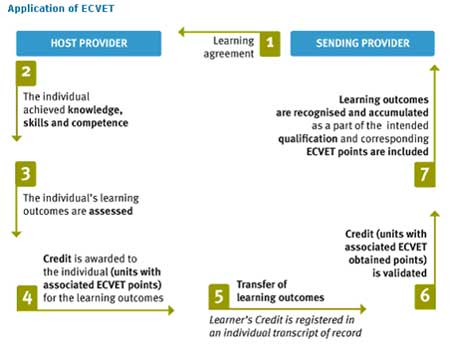
Figure 1: Building partnerships for ECVET
It is worth insisting that ECVET is not meant to replace the national systems, but rather to promote the improvement of flexibility and mobility among existing systems, that is to say: reduce the "barriers" against mutual recognition of learning outcomes, thereby promoting “European Passports” wherever appropriate. The application of ECVET for a given qualification is in accordance with the legislation, rules and regulations applicable in the Member States.
In 2001, the IAEA published guidance 6 about the development, implementation and evaluation of training programmes, covering both technical and non-technical skills of NPP personnel, with a view to increase the levels of human performance (that is: work more efficiently and effectively while continuing to maintain the highest possible levels of safety). The Euratom training actions take naturally into account the IAEA guidance, wherever appropriate.
In this context, a number of Euratom Fission Training Schemes (EFTS) were launched in specific areas where a shortage of skilled professionals has been identified. The EFTS is a significant development aimed at structuring training and career development across the EU: it is also compatible and complementary with the objectives of ENEN (see Reminder below). Each EFTS is a long-term (usually 3-year) and ambitious (approximately 1.5 million Euro) training programme relying on the participation of all nuclear stakeholders.
The aim of the EFTS programme is to transfer knowledge, skills and attitudes in a number of key areas to different learners categories in nuclear fission and radiation protection, namely: research and industry workers having followed higher education, i.e. corresponding to EQF levels 6 to 8. The learners follow a variety of learning paths, including PhD student coaching, mentoring of new professionals, customer training, regular or virtual classroom training, face-to-face or distance learning, etc. The ultimate objective of each EFTS is to develop, wherever appropriate, a European passport that is made of a portfolio of specific learning outcomes that are recognised across the EU.
Currently there are seven Euratom FP-7 projects of the EFTS type and more are expected in the coming calls-for-proposals. They are examples of Euratom responses to the need of specific qualifications and competencies in selected domains, using the above ECVET tools. Whenever possible, a collaboration exists with the “training” Working Groups of the EU platforms SNE‑TP, ENEF and MELODI. The current seven Euratom FP-7 training projects are listed below and are described in the website 7 of the ENEN association:
TRASNUSAFE: health physics sector (e.g., ALARA principle)
ENEN III Training schemes : nuclear systems suppliers (e.g. Generation III and IV)
ENETRAP II: nuclear safety authorities (e.g., Radiation Protection Expert)
PETRUS II: radwaste agencies (e.g., repository and engineered systems design)
CINCH: nuclear and radio-chemistry (e.g. chemistry of nuclear fuel cycle)
CORONA: VVER personnel (e.g. special assignment training tools and facilities)
EURECA!: super-critical water reactor (e.g. safety and performance of Generation IV).
The proposed EU instrument is the European Credit system for Vocational Education and Training (ECVET), due to be implemented by Member States by 2012. The focus is on the setting up of “ECVET Partnerships” and the design of specific arrangements for credit transfer for learners, based on learning outcomes. Learning outcomes can in principle be achieved through a variety of education and training paths (be it in a formal, non-formal or informal context). They are recognized throughout the EU, thereby offering a EU response to the challenges discussed above: in particular, borderless mobility and lifelong learning.
Of particular interest for the nuclear community are the first achievements of training related FP-7 projects aligned with ECVET (Euratom Fission Training Schemes / EFTS), in the following sectors where a shortage of skilled professionals has been identified:
the health physics sector (e.g., ALARA principle) / TRASNUSAFE project
the nuclear systems suppliers (e.g., construction challenges for GEN III) / ENEN III
the nuclear safety authorities (e.g., Radiation Protection Expert) / ENETRAP II
the radwaste agencies (e.g., repository and engineered systems design) / PETRUS II
the nuclear and radio-chemistry sector (e.g. chemistry of nuclear fuel cycle) / CINCH
VVER personnel (e.g. special assignment training tools and facilities) / CORONA
super-critical water reactor experts (e.g. safety of Generation IV) / EURECA!
The nuclear stakeholders, especially the departments in charge of human resources (training) and professional recruitment, are invited to discuss portfolios of learning outcomes as well as ECVET partnerships. The aim is to prepare a new generation of highly qualified professionals, taking into account the requirements of borderless mobility and lifelong learning. The ENEN association plays a key role in this process. The first ECVET experiences in nuclear fission training (ENEN III, ENETRAP II and PETRUS II) were discussed at the FISA-2009 Conference, organized by DG Research and Innovation / Euratom (Prague, 22 -26 June) 8.
In conclusion, Euratom research and training activities contribute not only to the creation of knowledge but also to competence building (where skills and attitudes come on top of knowledge). The participation of the main stakeholders (in particular, SNE-TP, ENEF, FORATOM) is particularly appreciated in this competence-building process, involving VET providers (usually with industrial background) and academia from all Member States.
1 ec.europa.eu/research/energy/euratom/index_en.cfm
2 eur-lex.europa.eu/LexUriServ/LexUriServ.do?uri=OJ:C:2009:155:0011:0018:EN:PDF
3 www.snetp.eu
4- DG Education and Culture documents on lifelong learning policy (including Cedefop)
ec.europa.eu/education/lifelong-learning-policy/doc50_en.htm
ec.europa.eu/education/lifelong-learning-policy/doc60_en.htm
- Cedefop (2010) – "Linking credit systems and qualifications frameworks. An international comparative analysis" -
www.cedefop.europa.eu/EN/Files/5505_en.pdf
- Cedefop (2010) - The ECVET development in Europe. www.cedefop.europa.eu/EN/Files/6110_en.pdf
6 IAEA Systematic Approach to higher level Training (SAT)
"Systematic Approach to Human Performance Improvement in Nuclear Power Plants: Training Solutions"
IAEA-TECDOC-1204, March 2001 – www.iaea.org/NuclearPower/Engineering/Publications/
7 www.enen-assoc.org/en/training/for-nuclear-community/efts-fp7.html
http://www.euronuclear.org/e-news/e-news-34/pime2012.htm


12-15 February 2012, Warsaw, Poland
The PIME Award for Communications Excellence aims to recognise the achievements of professional communicators in the nuclear sector (industry, regulartory bodies, research centres, national associations, ...) who have successfully connected with their audiences, helped to dispel myths and misinformation about nuclear energy and enhanced the image of the whole nuclear sector.
We are looking for campaigns that show the most creative strategy, illustrative and innovative use of communications tools and can show tangible results. Multi-media packages backed up by sophisticated audiovisuals and glossy brochures can provide impressive results, but so too can a campaign that ran on limited resources. It’s all about grass roots, creative communications that really reach out to their audience.
How to apply?
To apply simply complete the PIME AWARD entry form and send it to the PIME conference secretariat together with copies of all supporting documentation. For further information, please refer to www.pime2012.org or contact the PIME conference secretariat.
Deadline for the PIME AWARD Entry FORM: 30 November 2011

 |
http://www.euronuclear.org/e-news/e-news-34/rrfm2012.htm


The RRFM-IGORR 2012 Programme Committee is calling for both oral and poster presentations in the following areas:
Mark your diaries and be a part of it! Upload your abstracts on www.rrfm2012.org before 18 November 2011.
Authors should submit their abstract text in English through the Abstract Submission System on Reference number ISBN 978-92-95064-13-3 |
organised in collaboration with:
http://www.euronuclear.org/e-news/e-news-34/TopSafe2012.htm


In view of the on-going discussions and initiatives that have been taking place in recent months the European Nuclear Society (ENS) has decided to organise the next edition of, TopSafe, its topical conference on safety at nuclear installations, from 22 – 26 April 2012, in Helsinki, Finland.
Book your place at the TopSafe 2012 conference now!
TopSafe 2012 will focus on three main subjects:
Safety and related analyses in operating nuclear power plants and other nuclear installations
Safety and risk assessments
Trends in nuclear safety for existing and future installations
The programme will be out soon! Visit www.topsafe2012.org for more information.
http://www.euronuclear.org/e-news/e-news-34/TopFuel2012.htm


More information is available on the TopFuel 2012 Conference Website: www.topfuel2012.org.
The TopFuel 2012 Programme Committee is calling for both oral and poster presentations on the following topics:
Operation and Experience
Fuel operating experience and performance; reliability; high burn-up fuels; water side corrosion and hydriding; stress corrosion cracking; MOX fuel performance; post irradiation data; pool-site examination; radiation effects; water chemistry and corrosion counter-measures; assembly distortion; mixed-core operation; re-use after transportation/storage.
Transient Fuel Behaviour
Transient fuel behaviour and criteria (RIA, LOCA, ATWS, power ramps …); fuel safety-related issues; pellet cladding interaction (PCMI/PCI); transient fission gas releases; cladding bursting/ballooning, pellet fragmentation/dispersal during transient events; small and large-scale fuel testing facilities; fuel behaviour under extended loss of cooling, re-criticality.
Design and Materials
Advances in fuel assembly design; fuel processing and manufacturing; cladding and structural alloy development; MOX fuel design and manufacturing; fuel design for improved thermal hydraulics, mechanical and corrosion-resistant behaviour; irradiation experience in test reactors; accident resistant fuel; fuel design optimisation for disposal; innovative fuel concepts.
Modelling
Development, verification and validation of fuel modelling codes; multiscale modelling; multi-physics coupling; fuel behaviour modelling during operation and under back-end conditions; water chemistry modelling; treatment of uncertainty; statistical analysis; design and analysis methods.
Spent Fuel Storage and Transportation
Interim storage; reprocessing; closed fuel cycles; criticality; fuel behaviour in dry containers, wet storage ponds and during transportation; long-term storage strategies; ageing; R&D activities; fuel database management.
Mark your diaries and be a part of it! Upload your abstracts on www.topfuel2012.org before 15 February 2012.
Authors should submit their abstract text in English through the Abstract Submission System on www.topfuel2012.org by: 15 February 2012 Deadline for draft paper submission: 8 May 2012 Email ALL correspondence to topfuel2012@euronuclear.org. Your abstract contribution will be included in the Conference |
|---|
The abstracts received will be peer reviewed by the TopFuel 2012 Programme Committee. Authors will be notified of paper acceptance by 27 March 2012.
http://www.euronuclear.org/e-news/e-news-34/ENC2012.htm


Mark your diary and book your place at European Nuclear Conference (ENC 2012), which will take place from 9 - 12 December 2012, in Manchester, United Kingdom. ENS has already begun organising this important event and is happy to announce that Norman Harrison, Director of Strategic Development at Babcock and President of the Nuclear Institute, will take over the general conference chair and that Professor Frank Deconinck, Professor Emeritus Medical Physics, Vrije Universiteit Brussel, will take over the chair of the ENS 2012 Programme Committee.
As usual, ENC 2012 will be accompanied by a major exhibition featuring stands representing major players in the nuclear industry. More details will be announced soon and ENS members will have the possibility to make a priority reservation of exhibition space.
For more information visit the ENS 2012 website at www.enc2012.org.
http://www.euronuclear.org/e-news/e-news-34/reprocessing-of-radwaste.htm

The Centre for Technological Transfer Ltd. is a new Bulgarian company that specialises in the international transfer of innovative technologies and know-how. Its main mission is to collaborate with leading companies in the nuclear energy field to implement new innovative and scientific solutions that not only have a commercial goal, but also provide a definite benefit to society.
We propose an effective new solution for managing the radwaste that results from the operation of light water reactors (PWR, WWER). By applying our patented technology and equipment we can reduce the volume of output radwaste through recycling, as 90% of the existing borates are reprocessed to produce an industrial non-radioactive product and reagents.
We have accumulated data relating to the reprocessing of real liquid radwaste from the VVER 1000 reactor at Kozloduy NPP. We also have at our disposal information on how to operate a semi-industrial (prototypic) installation, including that related to operational modes, the dose loading of personnel, the radiation state of the devices and other data necessary for normal and non-accident related servicing.
The method used for radwaste reprocessing includes the separated collection of the radioactive waste water, separated concentration and subsequent mixing. This is characterised by mixing radwaste containing boric acid (between 35 and 200 g/l) with radwaste of a summary salt concentration of between 400 and 500 g/l that doesn’t contain boric acid. During this process non-radioactive salts are removed. The concentration of borates at a level of between 20 and 25 g/l is reached in the radioactive waste concentrate, which in turn is mixed with a solution of alkaline metals in order to produce insoluble non-radioactive borates of alkaline metals and between 2 and 4 g/l of liquid radwaste containing boric acid.
The method and the equipment used for liquid radwaste reprocessing allows the collection, without any harm caused to the environment, of borax, calcium and magnesium borates, solutions of boric acid and basic sodium. These products are valuable because they can be reused. The method can also be used to collect and store radwaste, while allowing for the continuing harvesting of salts, which doesn’t require control.
GENERAL SCHEME FOR LIQUID RADWASTE REPROCESSING
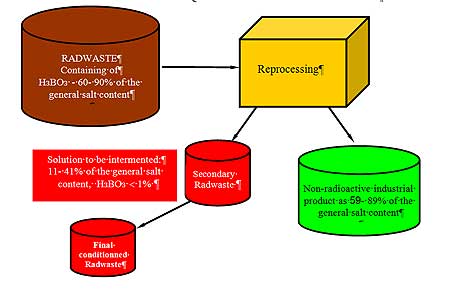
Remark: The volume reducing depends on the percentage content of borates in the output radwaste – a higher reducing coefficient of the secondary radwaste is achieved at a higher level of borates concentration.
On the base of available data from tests carried out one can conclude the following:
The method is applicable to concentrated liquid radwaste and to separated solid salts in the liquid radwaste storage tanks.
The radioactivity is concentrated in a liquid radwaste that has a volume many times lower than the initial one.
The concentrate can be reprocessed with the application of all known reprocessing methods; the negative influence of the borates in the process of cementing the radwaste is removed.
The product produced from purified radionuclides can be qualified as an industrial one, the content of each isotope in the waste being within allowable limits.
No industrial waste is produced for further storage.
During the tests carried out on the liquid phase of the radwaste, 6,883 liters of a solution with a salt concentration of 250-270g/l were reprocessed, from which НзВОз (35 g/l), NOз SO4 Na, K, lubricants, and 120 kg of non-radioactive salts were removed. During tests carried out the solid phase of the radwaste, 103 kg from the operational radwaste storage (BKO) tanks were reprocessed and 78 kg of non-radioactive salts were removed. The aim of the tests was to obtain a non-radioactive salt, which explains why the tests were stopped when a residual concentration of 10-15 g/l was achieved for the liquid phase and a level of 25-30 g/l was achieved for the solid phase.
Examples:
The reprocessing of 100t of radwaste containing 60-90t boric acid - direct reprocessing through cementation carried out at Kozloduy NPP: 1200-1800 m3 liquid radwaste at concentration level of 50 g/l НзВОз will be reprocessed through cementation and will take up 3,500 – 5,100 m3 of radwaste storage space.
Reprocessing through implementation of the said technology and consecutive cementation as carried out under normal conditions at Kozloduy NPP: By applying our technology to the same volume of above-mentioned liquid radwaste, 59 – 89 t of pure borates (containing a maximum of 50 Bq/l radioactive caesium) will be obtained, and 12.5 - 50 m3 of liquid radwaste with a concentration of 5 g/l of НзВОз will undergo cementation. This will take up 40 - 150 m3 of radwaste storage space. The concentration process is not influenced by the content of radionuclides. The higher the concentration of radionuclides, the higher the purification coefficient.
The reprocessing of 100 m3 radwaste containing 75-95 g/l boric acid at a general salt concentration level of 100g/l - direct reprocessing through cementation for PWR radwaste: 150 - 190 m3 liquid radwaste at a concentration level of 50 g/l НзВОз will be reprocessed through cementation. The result will take up 270 – 350 m3 of radwaste storage space.
Reprocessing through implementation of the said technology and consecutive cementation in accordance with the normal conditions governing PWR radwaste:
By applying our technology to the same volume of above-mentioned liquid radwaste, 7.45 - 9.49 t pure borates (containing maximum of 50 Bq/l radioactive Cesium) will be obtained and 1 - 5 m3 of liquid radwaste with a 5 g/l concentration level of НзВОз will undergo cementation. This will take up 1.8 - 9 m3 of radwaste storage space. The concentration process is not influenced by the content of radionuclides. The higher the concentration of radionuclides, the higher the purification coefficient.
The result of applying the said technology:
A reduction in the volume of secondary radwaste for buried, leading to a proportional reducing of costs.
Besides the economic effect, which is also expressed through very low initial costs, there is a positive influence on the radiation safety during the storage of radwaste obtained through cementation, because the quality of the cement matrix is thus improved.
The applied technology is not influenced by the initial content of radionuclides and the presence of insoluble sediments, complex-formers, surface-active materials, organic products, soaps, oxidants, reductors, desactivating solutions and other impurities.
For further information about this patented technology and the installations required to apply it, please contact:
Contacts:
Dr. Dimitar Popov
e-mail: dimitar@kth.se
tel. +359 884 563 836
Dipl. Chem.Eng. Krasimir Filipov
tel/fax: +359 2 846 6507
e-mail: ctt_bg@abv.bg
tel: +359 895 742 687; +359 899 800 445
Dipl. Eng. Vladimir Vladimirov
tel.+359 899 800 446
ID’s of our patent:
BG65037 (Bulgaria)
US 7323613 (USA)
JP4495458 (Japan)
ZL02822276.8 (China)
(in EU the registration is being performed)
![]() Here is the patent publication in USA
Here is the patent publication in USA
http://www.euronuclear.org/e-news/e-news-34/alexandru-ene.htm

Already a regular fixture and a well-established tradition, this year’s “Alexandru Ene” Drawing and Essay-writing Competition once again attracted a considerable number of participants, all eager to enter into this annual battle of creativity. This year’s battle theme was: The Atom – Our Universe.
Unlike with previous editions, this one was dedicated to a series of events that marked the scientific world – taking in the 140 years since the physicist Ernest Rutherford was born and 100 years since the discovery of the atomic nucleus and since Marie Curie received the Nobel Prize for Physics for discovering radium and polonium.
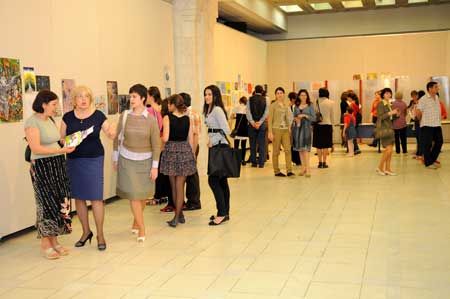
The traditional success of this competition was further underlined with entries to the 2011 competition received from hundreds of participants from all over Romania. Children from Bucharest, Pitesti, Constanta, Buzau and Covasna, all talented writers and artists, put their skills to the test, putting to paper evidence of their knowledge, perception and personal views on the omnipresent atom.
To encourage greater objectivity and transparency in the judging process this year’s competition started with a new category aimed especially at art school and high school students. We wanted to grant an equal opportunity to students with outstanding talent for drawing, as well as to those whose inspiration and creativity is channeled more through a paint brush. The contestants were divided into two age categories: 9 – 13 years and 14 – 19 years. They competed according to their specific educational category.
More than 200 entries were considered for the drawing competition, of which 25% were students at fine arts high schools. Though the essay section received less papers than the other competition section (only 40 essays), it was nonetheless blessed with some inspired literary creations. All the entries from both categories respected the specified theme and tried to convey, as accurately as possible, the importance of the atom in relation to the many resultant discoveries that society benefits from today.
This year’s jury consisted of seven members and was honoured by the presence of the painter Mircea Deac. The quality, originality and creativity of the entries made the adjudication process a difficult one - it always difficult to be a judge in artistic competitions.
At the end of the evaluation and adjudication process, two special prizes were awarded for the drawing competition - one for the small artist category, the other one for the students of a school from province of Arges. There was a first prize, a second prize, a third prize and several special mentions. Unfortunately, one again this year, no essay was adjudged to have won the special prize, but there was a first, second and third prize, as well as special mentions too.
The competition ended on 23 May 2011, with an exhibition at the Constantin Brancusi Hall at the Parliament Palace, where all prize-winners received their awards, not just the first prize winners. Furthermore, all the entries in the competition were exhibited. So, for two days, those present, as well as tourists, children and parents, were able to admire the drawings.
We thank all the children, from all over the country, who participated in this year “Alexandru Ene” drawing and essay-writing competition. We appreciated their interest, desire and creativity, all of which they showed when presenting their work, thereby showing how they had converted the atom into the nucleus of their artistic universe.
For further information please contact:
Mihaela Stiopol: mstiopol@nuclearelectrica.ro
http://www.euronuclear.org/e-news/e-news-34/seminars.htm

The success of these educational projects in previous years convinced the management of SN Nuclearelectrica SA and the Romanian Association “Nuclear Energy” to resume, during the 2011 academic year, its programme of seminars dedicated to providing the public with appropriate and accurate information on nuclear energy - beginning with schools and high school students in Bucharest. An agreement was reached with the School Inspectorate of Bucharest with a view to launching several joint initiatives under the “Programme for information for the young generation information relating to nuclear power.”

The project started in March and consisted of the organisation of thematic seminars for both high school and elementary schools students in Bucharest. For high schools a series of four seminars was designed, each dealing with a specific theme. The seminars for the younger students revolved around a single theme. The seminars are adapted to the level of the knowledge the students’ have accumulated in school and the information communicated is adapted to their overall level of understanding.
The first seminar of the series of four opened with a debate on the role of nuclear energy in the context of sustainable development and its contribution to fighting climate change. This was then followed by topics such as the Cernavoda NPP and “Three Miles Island, Chernobyl and Fukushima: three accidents that had a fundamental impact on the destiny of nuclear power.” Finally, the seminar finished with a presentation on radiation and radioactive waste.
Originally intended for a total of around 100 students, the seminar later developed into four modules attended by more than 400 students and teachers. Numerous requests were received from teachers and the headmasters of elementary schools, and this resulted in an increase in the number of seminars - with a special emphasis on secondary school final year students. This gave an opportunity to as many schools as possible in Bucharest to take part. The lack of clear, concise and expert information during normal classes increased students’ and teachers’ interest to find out new information from the invited specialists.
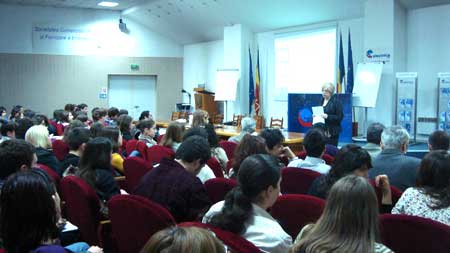
The seminars for general school students followed a more general theme, from the discovery and the importance of the atom, radiation and radioactivity, to different energy sources, highlighting nuclear power importance. The organisers and lecturers that gave presentations are members of the AREN Young Generation. They joined in the project enthusiastically in order to promote improved and more accurate knowledge of nuclear energy as a whole.
At the end of the seminar programme participants are awarded diplomas, confirming their participation and emphasising their active participation in the programme’s workshops. The most important thing of all was that the participants learned how and where nuclear power is produced. They had an opportunity to see and touch a fuel bundle and, from now on, they are aware of the benefits and drawbacks of various kinds of energy sources.
http://www.euronuclear.org/e-news/e-news-34/boeck.htm

ENS is pleased to present the following appraisal of the book, based largely on its summary.
The nuclear disaster in Fukushima shocked the world fundamentally. The call to pull out of nuclear energy is getting louder – and more often than not it is politicians trying to win over voters that are leading the chorus.
It is a fact, however, that to date, no comprehensive or internationally relevant works dealing with what actually happened at Fukushima have been published. However, there are plenty of half-truths, misconceptions and false information being spread via the media about the global consequences of the disaster. In addition, sensationalised prognoses of a grim future are frequently pronounced, all of which have unsettled the understandably concerned public. Are the opponents of nuclear energy playing on the fears of the public or is the threat from Fukushima real and consistent with those fears?
In “What happens when something happens” Prof. DI Dr. Helmuth Böck, the former Reactor Manager of the Research Reactor at the Vienna Technological University’s Atominstitut, together with DI Eileen Radde, DI Michael Gerstmayr and other colleagues, provide an analysis of the the case based on real facts.
The authors recount in a captivating manner - backed up by examples and incidents that not many readers will be aware of - the real dimension of the threat it poses to the local community and region. They present readers with hard facts and truth behind the horrific scenarios put forward and inform them of what really happens in a genuine disaster emergency situation. Furthermore, they examine factors that preceded the disaster and broach the subject of man’s insatiable hunger for energy; something that dominates the world and continues to drive the further commercial use of nuclear energy. Also, the ghost of Chernobyl and its legacy, which has been largely dismissed from many people’s minds, is re-examined based on current knowledge.
Finally, the book tries to explain the situation we would find ourselves in were a core meltdown ever to occur. The common clamour for a complete withdrawal from nuclear energy is also examined from a factual research-oriented perspective, with the key questions asked : “Is it realistic for the world to abstain from using nuclear energy?” What would be the consequences for energy prices if such a scenario were to happen?” “Would it still be possible to minimize C02 emissions to stop the threat of climate change?” Within the latter’s context alternative sources of energy production also play a major role.
The insider knowledge the book presents is impressive. It gives updated and detailed knowledge on the subject, presenting it in a scientific and factually manner and in an entertaining narrative style.
If ENS NEWS readers would like to get a copy of What happens when something happens, they should contact Helmut Böck at: boeck@ati.ac.at.
http://www.euronuclear.org/e-news/e-news-34/slovenia.htm


From 12 – 15 September 2011, the Slovenian Nuclear Society organised in Bovec, Western Slovenia, the twentieth edition of the international conference Nuclear Energy for New Europe. This general nuclear conference brought together 180 participants from 24 countries, as well as representatives from two international organisations. A total of 126 papers were presented, which prompted a lively and constructive debate on a range of subjects, including the accident at Fukushima, the stress tests, current and future reactor designs (including fusion reactors), the prospects for the production of sustainable energy on both a national and global level and on the role of nuclear energy in the 21st Century. For more information on this year’s conference, go to: www.nss.si/nene2011.
The global role of sustainable nuclear energy will also be the central topic at next year’s Nuclear Energy for New Europe conference, which will take place in Slovenia’s capital city, Ljubljana, from 5 – 7 September.
http://www.euronuclear.org/e-news/e-news-34/reisch.htm

He also worked for a year at the IAEA, where he was instrumental in teaching people about the Agency’s INES accident rating scale. Frigyes was a great supporter of ENS NEWS, regularly contributing technical articles about the work carried out at KTH, especially with regards to reactor design and research. On behalf of ENS I would like to convey my sincerest condolences to all his family, friends and former colleagues. Mark O’Donovan |
http://www.euronuclear.org/e-news/e-news-34/HNS.htm

On 3 October, the Hungarian Parliament approved the new National Energy Strategy for the period up to 2030, with a further projection to 2050. Within this Strategy several potential options have been discussed. The so-called “Nuclear-Coal-Green” option is considered to be the most realistic and preferred one. Its key elements are as follows:
The long-term use of nuclear energy within the energy-mix
The preservation of the current contribution level of coal-based energy production
The increased use of the renewable energy sources
The Hungarian Nuclear Society (HNS) welcomes the resolutions made by the Parliament and included in the Strategy. The Society believes that the following statements are of particular importance:
Nuclear safety has to be the top priority throughout the nuclear fuel cycle.
The long-term use of nuclear energy in Hungary considerably increases the safety of the country’s energy supply, decreases the rate of natural gas consumption, and contributes to the solution of climatic and environmental issues in an economic way.
The current units at the Paks NPP will be shut down after 2030. Although exact dates have not been defined within the Strategy, two new nuclear units are expected to be commissioned by 2025 and 2030. Their operation could also satisfy the increasing demand for the electrification of traffic (railway and road).
At the same time, the HNS has identified considerable inadequacy when it comes to the provision of basic education in the natural sciences and support for nuclear research and development. In both areas stronger governmental assistance could favourably contribute to ensuring that the professional competence required to achieve the objectives underlined by the National Energy Strategy is available.

Predicted nuclear capacity in Hungary
http://www.euronuclear.org/e-news/e-news-34/sne-news.htm

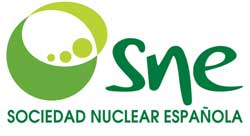
The 37th Annual Meeting of the Spanish Nuclear Society took place in Burgos, from 28 - 30 September 2011. It coincided with the 40th anniversary of the Santa María de Garoña NPP (www.reunionanualsne.es).The meeting was attended by 600 participants and 100 accompanying guests. In addition, 32 companies took part in the parallel exhibition.

The programme featured 290 technical papers, three interesting courses entitled: Learn more about ..., and three plenary sessions - all of which enjoyed a high level of participation. Special significance was given to the session related to Fukushima, which included the notable presence of Akira Kawano, General Manager of TEPCO, and brought together senior representatives from various countries. In the session entitled: Long-term operation of nuclear facilities speakers presented their views on the long-term operation of nuclear power plants, as well as on the current status and related activities in their respective countries. The session Socio-economic impact of the nuclear sector, which was devoted to an analysis of the economic and social impact that nuclear facilities - and the nuclear sector as a whole - have on their environment was particularly well attended.
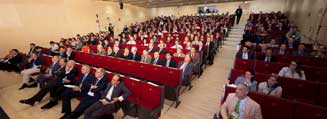
The Annual Meeting’s agenda revolved essentially around two main topics: Santa Maria de Garoña NPP and the Fukushima accident and its implications. The first was comprehensively covered by several sessions that addressed the issues raised by the current status of Santa Maria de Garoña NPP. The second theme was addressed during the aforementioned plenary session, which was both interesting and emotional. During this plenary session the preliminary results of stress tests conducted by the operators of the Spain’s NPPs were also commented on. The assessment of the Council for Nuclear Safety (CSN) was also discussed and it was noted that these tests, which are seen as a reassessment of safety margins in the event of extreme scenarios such as the one that occurred in Fukushima, are a rigorous response to the need for Spanish NPPs to continue to conform with the strictest standards of safety. They will also help to identify improvements that will further expand these safety margins.
In addition, monographic sessions were held on such interesting topics as Impacts on health and the environment in the vicinity of a nuclear facility, Experience of Spanish Companies in the Construction of Nuclear Pplants and Knowledge Management in the Latin American Nuclear Industry.
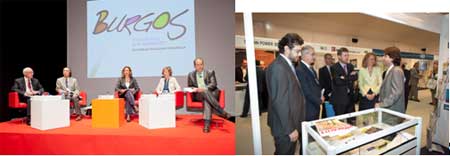
Courses were offered in order to promote the exchange of information and knowledge on topics such as Technological Development of the Spanish Nuclear Industry, The UNESA-EPRI Collaborative Programme, Intelligent Networks and The Nuclear Plant Accident at Fukushima Daiichi.
Nuclear Youth gave a Basic Course in Nuclear Science and Technology and Women in Nuclear (WiN) organised a panel discussion entitled: Let's talk about Fukushima.
In addition to plenary sessions, and as part of the wider technical sessions programme, the latest technological developments in our industry were presented, specifically related to issues such as nuclear safety, fuel, radioactive waste, nuclear medicine or radiation protection. Special importance was given to research and development with regards to the continuous improvement of the operation and maintenance of our plants, as well as to the participation of Spanish industry in new international projects.
The technical programme was complemented by a cultural and social programme that centred around the beautiful city and province of Burgos, its gastronomy and the paleontological treasures of the Sierra de Atapuerca.
During the official dinner SNE handed out its awards and the SNE medal was presented to Jose Dominguis SNE, President of DOMINIGUIS group (LAINSA).
The thirty-eighth Annual Meeting will be held next year, at the same time of the year, in the city of Cáceres, and will be hosted by IBERDROLA.
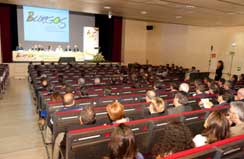
The SNE has awarded 8 scholarships from the 25 applications that it received as a result of the 2011 call for post-graduate scholarships in the field of nuclear expertise.
The Society also awarded prizes for the 4th AREVA Photo Competition, which was organised for partners and families. A total of 103 photographs were sent in, including many of an excellent technical quality.
The prize for the best SNE 2011 Thesis, Master’s Thesis or Dissertation was awarded to a student studying for a Master’s in Nuclear Engineering and Applications at CIEMAT. The winning entry was selected from around 20 projects.
http://www.euronuclear.org/e-news/e-news-34/sien.htm

The annual SIEN conference is already a traditional fixture in the Romanian nuclear events calendar. SIEN 2011 was held in Bucharest, Romania, from 16 - 20 October and was attended by a large number of participants from Romania, as well as from abroad. SIEN is organised by the Romanian Association for Nuclear Energy (AREN) and the Romanian Atomic Forum (ROMATOM), with the support of ENS and other sponsors.
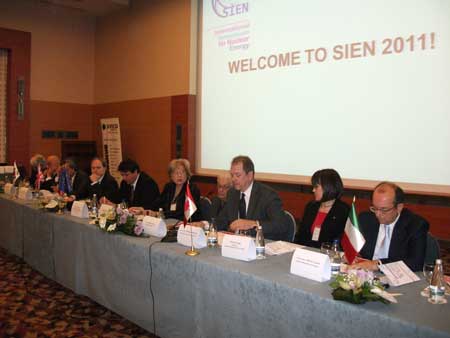
Until now, public interest in nuclear power has increased not only due to the Fukushima accident, but also due to the large-scale re-evaluation of NPP safety that is taking place worldwide. Within this framework, specialists are more than ever engaged in debating and exchanging information about nuclear energy, extending international cooperation and improving communications.
SIEN 2011 gave speakers and participants the opportunity to discuss key topics, such as Developing New Nuclear Technologies, Overcoming Challenges to Nuclear New Build Projects; Building on Experiences from Global Projects; Operation, Inspection and Maintenance; Fuel Cycle; Radioactive Waste; Decommissioning; Operation and Economics; Safety and Environment; Increasing Nuclear Safety Features; Safety Culture; Addressing Regulatory Issues and Public Acceptance and Confidence Strengthening.
The three-day symposium programme featured interactive and practical workshops dedicated, among other topics, to radioprotection, the implementation of public participation, quality management standards and others. The conference finished with a technical tour to Cernavoda NPP and to the Pitesti nuclear fuel plant.
Among the most significant attendees at SIEN 2011, we would like to acknowledge in particular the participation of Their Excellences the Ambassadors of Canada, Great Britain, South Korea and Italy and the contribution of Santiago San Antonio, former Secretary General of ENS and current Secretary General of NucNet, who gave a presentation about the information challenges during and after the Fukushima accident. We would also like to acknowledge the presentations made by representatives of the CANDU group, Ansaldo Nucleare and others.
The Romanian Young Generation Network and Women in Nuclear also held thematic workshops, which were dedicated to improving public communication, training opportunities, transparency and nuclear safety culture, respectively. The Young Generation chapter in Romania, which is affiliated to ENS-YG, is a well-run and very active group that organises activities ranging from school and high school seminars explaining the benefits of nuclear power to participation in international events, such as IYNC (the International Youth Nuclear Congress).
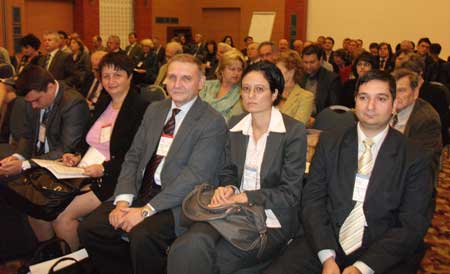
Benefiting from the participation of more than 150 specialists, SIEN 2011 proved to be a highly scientific forum for discussions on key topics and helped to promote the setting of an agenda for future activities dedicated to the promotion of the peaceful use of nuclear power. A poster session and an exhibition were organised in parallel with symposium.
http://www.euronuclear.org/e-news/e-news-34/kit.htm

In September 2011, the 5th International Course on Fusion Technologies took place at the Karlsruhe Institute of Technology (KIT), Germany. A total of 49 participants from 10 countries took advantage of the opportunity to expand their knowledge about fusion technology. Here are the impressions given by a participant in this year’s event:
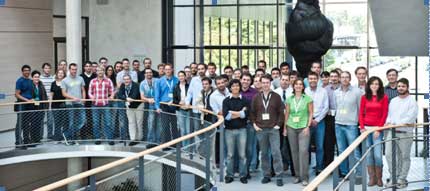
“I have been working for almost two years in the field of fusion. At the Summer School I expected to get a good overview of all related fusion fields. As an engineer I am particularly interested in the design of fusion components and the problems which have to be overcome in implementation of this innovative technology.
In a fact, the Summer School has met my expectations. The variety of lectures, given by international experts from CCFE, CEA, ENEA, KIT and industry, allowed me to better understand the complexity of a fusion power plant.
All relevant components for the fusion power plant operation were presented after an introduction to the fundamentals of plasma physics. A particular emphasis was given to the material behaviour of shielded and plasma facing components. The long term behaviour of materials under reactor conditions is a very important criterion for the component design.
The various test facilities that we visited illustrated many complex requirements which must be met in order to obtain meaningful and scalable results. For example, in some studies a standard material sample, ~5 cm big, is charged under cryogenic conditions, and in other tests a hall has to be built to test a prototype like the TF coil for ITER.
Detailed presentations on the status of JET, Wendelstein-7X, JT-60SA, ITER and DEMO demonstrated the progress which has taken place in the last decades. Despite the immense progress already achieved, the fusion power plant as a standard reactor for the 21st century remains a challenge.”
http://www.euronuclear.org/e-news/e-news-34/summer-school.htm

Since 1995, the Frédéric Joliot/Otto Hahn Summer School has been organised jointly by the Karlsruhe Institute of Technology (KIT) and the Commissariat à l’Energie Atomique (CEA)/Cadarache, with the location alternating between the two sites. On this occasion the summer school took place in Karlsruhe’s Akademiehotel, from 25 August to 3 September.
This year’s focus was on High-Fidelity Modeling for Nuclear Reactors: Challenges and Prospects. Experts from internationally renowned research institutes and universities in America, Europe, and Germany presented the findings of their state of the art research and development programmes. The topics covered supported the main objective of the school, namely to present to young scientists from all over the world the full scope of nuclear engineering skills available. More specifically, the following issues were addressed:
Status and Perspectives of Modeling and its Role in Design, Operation and Safety (Prof. Turinsky); Thermo-hydraulics of Nuclear Reactors and Simulation of Two-phase Flow (Prof. Giot and Dr. M. Wörner); Structural Mechanics, Structure-fluid Interaction, and Earthquake Safety (Dr. Collard and Dr. Voldoire), Advanced Simulations in Neutronics and Reactor Physics (Prof. P. Ravetto, Dr. Leppänen, Dr. Hogenbirk, Prof. Larsen, and Prof. Mund), Progress in the Simulation of Fuel and Material Behavior (Dr. Vladimirov, Dr. Becquart, Dr. Van Uffelen, Dr. Bertolus), and Multiphysics and Uncertainty Analysis Methods (Prof. K. Ivanov, Prof. R. Macian and Prof. T. Downar).
In an extraordinary seminar, Prof. Dr. Ch. Kottmeier, Director of the Institute of Meteorology and Climate Research, explained the use of supercomputers in detailed climate modeling and weather forecasting. He drew parallels with the role of numerical simulation in nuclear engineering.
A total of 59 participants from 19 countries attended this year’s Summer School. During the ten days that it lasted participants had an opportunity to discuss and exchange information and views with the lecturers. This typifies the spirit of the School and supports the main objective of the directors, Prof. Dr. R. Stieglitz and Dr. R. Jacqmin, which is to enhance direct contact between lecturers and participants. Indeed, both participants and lecturers were able to exchange information on both a scientific and personal level both within and beyond the scope of the event itself.
The Summer School’s accompanying programme included a visit of AREVA’s experimental test facilities in Karlstein, where the participants were given an impressive insight into thermo-hydraulic experiments relevant to the safety of boiling and pressurized water reactors, their instrumentation and measurement technology.
The social programme included a hike through the beautiful landscapes of the Black Forest on the “Karlsruher Grat,” a guided visit to the town of Baden-Baden and a subsequent banquet at the “Molkenkur Baden-Baden,” where the guests enjoyed the typical pleasures offered by the local cuisine and regional wines.
In 2012, the Frédéric Joliot/Otto Hahn Summer School will again be co-organised by the CEA, and KIT, and will take place in Aix en Provence, France.
Dr. V. Sanchez /KIT-INR
WWW-Info: www.fzk.de/fjohss
http://www.euronuclear.org/e-news/e-news-34atomexpo.htm


ENS NEWS is happy to announce that the Society has a new corporate member, Atomexpo.
Many of you will remember that Atomexpo won the 2010 PIME Award for Communications Excellence for its JSC campaign. The winning campaign highlighted the network of Rosatom public information centres across Russia that are helping to raise Russian citizens’ awareness of the uses and advantages of nuclear energy.
Here is a brief profile of the company:
LLC Atomexpo is a Russian company active in the nuclear field that specializes in organising exhibitions, conferences, seminars, and other events, both in Russia and abroad.
It is also responsible for implementing a number of targeted public relations projects and activities in support of the nuclear industry.
Among the events that Atomexpo organises are the following:
The ATOMEXPO International Forum
ATOMEX, a forum for nuclear industry suppliers
ATOMECO, an international conference and exhibition
For further information about Atomexpo please visit their web site at: www.atomexpo.com/en
http://www.euronuclear.org/e-news/e-news-34/linn.htm


ENS corporate member Linn High Therm, a German company specialised, among other things, in the production of industrial and lab furnaces/ kilns, microwave furnaces, sample preparation units for spectroscopy, has sent ENS NEWS the following information regarding one its latest products. We are happy to share it with our readers. More information about Linn High Therm and its product range is available on their website at: www.linn-high-therm.de/
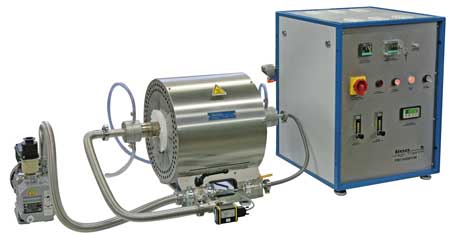
Tube furnace for fast cycle times under protective gas and vacuum.
For heat treatment of powders, for brazing and annealing processes.
Tmax: 1100 °C (1200 °C), Vacuum up to 600 °C (1000 °C)
Inside diameter of insert tube (Inconel) appr. 40 mm, length 600 mm
Heated length: 250 mm
Heating power: appr. 1 kW
Options: Gas feeding device, burn-off device with flame supervision, several program controllers, temperature control by trailing thermocouple, etc.
Adaptable to customer’s individual requirements.
http://www.euronuclear.org/e-news/e-news-34/nrg.htm

26.09.2011
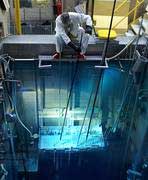 |
On 26 September, the High Flux Reactor (HFR) in Petten, the Netherlands, started up its 1000th production run of the medical isotope lutetium, which is used in the fight against pancreatic and intestinal cancer. What began as a small experiment ten years ago has grown into an indispensable weapon in nuclear medicine’s arsenal. The use of lutetium in nuclear medicine for the treatment of patients with neuroendocrine tumours has grown strongly in recent years.These are primarily slow-growing tumours in the pancreas, the intestinal tract or, in rare cases, the lungs. During the past ten years, around a thousand patients have been treated with lutetium in the Erasmus M.C. (Medisch Centrum – or Medical Centre) in Rotterdam alone. |
|---|
According to Prof. Eric Krenning, of the Erasmus MC, “With this therapy patients with metastic neuroendocrine tumours live three to four years longer and with a better quality of life? "
The successful application of lutetium in cancer patients means that it is now produced on a weekly basis in Petten. In recent years NRG (the “Nuclear Research & consultancy Group” in the Netherlands) has made significant investments in the development of special irradiation facilities in the reactor for this purpose. In collaboration with the company IDB Holland, production laboratories have been built in Petten and Baarle Nassau for the supply of lutetium to hospitals. This means that hospitals can count on a weekly supply of lutetium, now and in the future. With this 1000th production run, NRG and IDB Holland ensure that in the coming week tens of patients can once again count on receiving the proper treatment.
NRG is responsible for the operation of Petten’s HFR. Every day an average of 24,000 patients throughout the world are treated with isotopes produced in Petten. Consequently, NRG is the second largest producer of isotopes in the world. They are used for a variety of purposes, including for diagnosis (scans), for cancer therapy and for palliative care (pain control).
Every day, over 400 NRG employees work in a field that uses a safe application of nuclear technology to both guarantee a reliable energy supply and to promote better healthcare. This work ranges from the development of innovative reactor fuels, to dealing properly with radiation and to the recycling of radioactive waste. NRG is also a leader when it comes to safety at nuclear power plants and for the production of raw materials used in medicines designed to treat cancer.
http://www.euronuclear.org/e-news/e-news-34/wano.htm

The World Association of Nuclear Operators (WANO) is a long-established corporate member of ENS. WANO, through its four regional centres, unites the operators of the 441 nuclear power plants in the world in the common cause of achieving the highest possible standards of nuclear safety and reliability. This is done by working together to benchmark and improve performance and |
through mutual support and the exchange of information and best practices.
In response to the accident at Fukushima, WANO is continuously improving the services it provides to its members.
At its eleventh Biennial General Meeting, held in Shenzhen, China, on 25 October 2011, WANO presented its 2011 Nuclear Excellence Awards. The awards, which were created in 2003, acknowledge the outstanding contribution made by nuclear professionals to promoting excellence in the safe operation of commercial nuclear power plants.
Candidates first undergo a rigorous nomination, vetting and selection procedure before being chosen to receive an award.
This year’s award winners are:
Akram Ahsan of the Pakistan Atomic Energy Commission
CHEN Hua of the China National Nuclear Corporation
George Hutcherson of the Institute of Nuclear Power Operations (INPO), USA
Manuel D. Ibañez of the Spanish Electricity Industry Association (UNESA)
Susan Reilly Landahl of Exelon Corporation, USA
Lu Changshen of Daya Bay Nuclear Power Operations and Management Company, China
Stane Rožman of Nuklearna Elektrarna Krsko, Slovenia
Nikolay Sorokin of Concern Rosenergoatom, Russia
http://www.euronuclear.org/e-news/e-news-34/onet.htm


ONET TECHNOLOGIES has won a new strategic contract in Bulgaria.
February 2009 saw the signature of the contract for the treatment of boric acid concentrates coming from the evaporators of the Bulgarian nuclear power station in Kozloduy. This project is now under construction. Now, ONET TECHNOLOGIES has just been entrusted with the realization of the project of « Supplying and implementing a “cut-out and decontamination facility” for the same power station.
This project was the subject of a presentation to the French Embassy in Sofia, on Tuesday 4th October, 2011 in the presence of the ambassador, Mr. Philippe Autié, the project managers from the Kozloduy NPP, Messrs. Alexander Nikolov, Valentin Ribarski and Dave Mulholland, the Managing Director of Risk Engineering, Mr. Bogomil Manchev, the Chairperson of ONET TECHNOLOGIES Mrs. Dominique Mouillot and the director of international operations of ONET TECHNOLOGIES Mr. Emmanuel Costa.
This contract, which was obtained in partnership with the Bulgarian company Risk Engineering, represents a deal of a little more than 19 million euros over 3 years, financed by the EBRD. It consists of the construction of a facility with a surface area of 2500 m2 for cutting up and decontaminating the LLW (Low Level Waste) which comes from the decommissioning operations in progress on the Kozloduy site. The facility will have to treat four tons of waste per day, by sandblasting, high pressure water jetting and chemical or electrochemical etching.
ONET TECHNOLOGIES is in charge of the design, the manufacture and the implementation of the cutting and decontamination processes and the cross-disciplinary research, safety and radiation hygiene (about 25 000 hours of studies), whereas Risk Engineering will carry out the studies and the construction of the building, the ventilation and the handling systems.
This contract, which will be managed with the support of the subsidiary ONET TECHNOLOGIES Bulgaria, is at the crossroads of ONET TECHNOLOGIES’ two fields of expertise – decommissioning and new constructions. “It confirms ONET TECHNOLOGIES’ leading position in decommissioning and the treatment of waste in France and abroad” declared Dominique Mouillot, the Chairman of ONET TECHNOLOGIES.
In the light of European regulations, ONET TECHNOLOGIES is remarkably well-placed to seize the opportunities which should come up in terms of decommissioning in the countries of Eastern Europe. Other tenders of this type, for which ONET TECHNOLOGIES has bid, are already in progress, in Slovakia, for example.
The international market constitutes a strategic development axis for ONET TECHNOLOGIES, which already realizes 15 % of its turnover outside France.
With a turnover of 225 Million euros and a workforce of 2400 employees including more than 600 engineers, ONET TECHNOLOGIES is the service and engineering company for the nuclear power industry in France and abroad.
ONET TECHNOLOGIES is the leader on the market for the decommissioning of nuclear installations, as well as for the treatment of radioactive waste. It is a recognized actor in the maintenance of power reactors. ONET TECHNOLOGIES is a front-runner among the big nuclear component manufacturers in partnership with the Japanese MITSUBISHI HEAVY INSUSTRIES.
ONET TECHNOLOGIES is maintaining its development abroad by the creation of the subsidiaries ONET TECHNOLOGIES UK, ONET TECHNOLOGIES BULGARIA, ONET TECHNOLOGIES ROMANIA, ONET TECHNOLOGIES INDIA, ONET TECHNOLOGIES ITALIA.
Constantly turned towards the future and innovation, ONET TECHNOLOGIES is participating in projects such as ITER, generation IV reactors (ASTRID project in collaboration with the Atomic Energy Commission) and is investing in R&D programmes.
ONET TECHNOLOGIES is one of the 4 brands of the ONET Group, a service provider since 1860.
By maintaining its family-owned character, ONET has become a Servicec Group (1.37 billion euros in 2010) with an international span that brings together nearly 400 agencies.
Its development has been established on the values of listening, respect and daring, which are shared by the 57 000 employees who carry out every day “a whole world of services”.
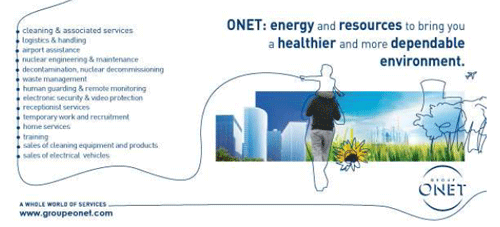
http://www.euronuclear.org/e-news/e-news-34/Sck-cen.htm

On 7 October, a one-day symposium devoted to studying the health effects of pre- and early post-natal irradiation took place at Belgium’s Royal Academies of Science and the Arts. It was a joint initiative of SCK·CEN and the Federal Agency of Nuclear Control. The main objective of this meeting was to assess the latest scientific data in the field of radiation-induced risks resulting from the exposure of embryos and young children to ionising radiation. Leading specialists delivered lectures on the various topics that featured on the symposium agenda. Another objective of the symposium was to discuss current data and their potential implications, as well as the priorities for future research. This part of the symposium consisted of a roundtable discussion between various stakeholders, some of whom work outside of the radiation protection community (journalists, philosophers, legal experts, etc.). The symposium, which sought to present scientifically accurate information whilst at the same time being understandable to an educated but non-specialist audience, attracted more than 120 participants from Belgium and further afield. They included radiologists and other users of ionizing radiation sources, radiobiologists, nurses, technologists, occupational medical doctors, experts in physical control, radio-physicists, regulators, etc.
In the opening lecture, Hanane Derradji, from SCK•CEN, summarised the «classic» risks associated with prenatal irradiation. These can differ, depending on the embryonic stage at which irradiation occurs, and can include embryonic lethality, growth retardation, congenital malformations, mental retardation, leukaemia or cancer.
Paul Jacquet, from the same laboratory, then summarised the associated research that has been carried out at SCK•CEN, and elsewhere, for more than 30 years. The radiobiology laboratory at SCK•CEN has mainly focused on the influence of the genetic characteristics of the embryo on its sensitivity to developmental anomalies resulting from exposure to moderate doses of ionising radiation. Particular attention was devoted to the pre-implantation period (10 first days of pregnancy) during which women cannot be aware that they are pregnant. It has long been assumed that during that early period, irradiation could only induce embryonic loss. However, recent research has shown that this “all-or-nothing” assumption is challenged by unexplained exceptions, for example an increased frequency of malformations reported in some mouse strains after irradiation during the first days of pregnancy. The research performed in Mol also included particular mouse strains that carry mutations in various genes involved in essential functions such as DNA repair, cell cycle control or apoptosis. In spite of the negative results obtained in most studies using doses higher than those normally used in radiological procedures, the possibility of radiation-induced congenital anomalies in some particularly sensitive individuals cannot be excluded when irradiation occurs very soon after fertilisation. However, the probability of such events occurring remains very low compared to the «spontaneous» risks associated with pregnancy.
Another area of radiobiological research performed at SCK•CEN concerns the mechanisms of mental retardation associated with prenatal exposure. This area of research was addressed by Rafi Benotmane, the Coordinator of the CEREBRAD Project, in which 11 European research institutes are involved within the framework of the new DoReMi platform. Marten Palme, an economist at Stockholm University, reported on some cognitive effects that were found among Swedish school children who had been exposed in utero to the radioactive cloud after the Chernobyl accident. Exposure occurred between weeks 8 and 25 of pregnancy, i.e. during the “sensitive period” identified by the survey that was carried out on the survivors of the atomic bombings in Hiroshima and Nagasaki. However, in Sweden, the maximal dose to which embryos had been exposed was estimated to be 4 mSv for the first year following the Chernobyl accident, a dose comparable to the annual dose resulting from exposure to natural radioactivity. Of course, the interpretation of such results poses a serious problem for scientists and these results need to be confirmed by other studies performed in other regions of the world that are characterised by an excessive level of radioactivity.
In another very interesting lecture, Wladimir Wertelecki, from South Alabama University, reported on an increase in the frequency of some congenital malformations in the population of Rivne-Polissia, a region of Ukraine strongly contaminated by the Chernobyl accident. The inhabitants of this region remain continuously exposed to abnormally high levels of radioactivity due to their way of life. Mr. Wertelecki was cautious about how to interpret his results, as the observed malformations could also be caused by exposure to other agents like alcohol or dietary insufficiencies of , for example, folic acid (vitamin B9). However, in the latter case, alcohol could not be the only cause of these effects. Mr. Wertelecki also suggested that radiation could possibly act in synergy with one or other of these agents and called for additional collaborative studies to be carried involving this absolutely unique population (contact: genfir3@gmail.com).
Elisabeth Cardis, who was Head of the Radiation Group of IARC for more than 20 years and is now working at CREAL, (Center for Research in Environmental Epidemiology), in Barcelona, summarised available data on the risks of childhood and adult cancers resulting from in utero exposure. While an increase in childhood cancer cases was observed in a number of epidemiological studies after exposure to low-dose diagnostic X-rays, the extent of such an effect is uncertain. Additionally, an increased risk of cancer in adults was also observed from various studies. But it is still unclear whether the sensitivity of embryos to this effect would be comparable with, higher than or lower than the sensitivity of young children to the same effect.
Hubert Thierens, of Ghent University, reported on an important study that has been carried out involving very young children who had a CT scan. The research team investigated the incidence of double-strand breaks (DSB) in children exposed to X-rays during interventional cardiological procedures. Small volumes of blood were collected before and after the procedure and the number of γ-H2AX foci present in the lymphocytes was observed and compared. The γ-H2AX foci constitute a typical biomarker of radiation-induced DSB. A clear increase in the number of foci due to the interventional X-rays was found in each patient. Moreover, hypersensitivity to this effect was found at the lowest doses and researchers obtained comparable responses after the in vitro irradiation of blood samples. Various elements suggest that this hypersensitivity at very low doses could result from a bystander effect (phenomenon by which non-irradiated cells show the same effects as neighbouring irradiated cells due to the transmission of certain signals by the latter). Importantly, the author concluded that the LNT hypothesis, which is supposed to be conservative, could actually underestimate radiation-induced DNA damage in the low dose range.
Géraldine Thomas, from Imperial College of London, is a member of the team that recently published a very important paper on the «molecular signature» of radiation-induced thyroid cancer in children. This type of cancer constitutes the most obvious health consequence of the Chernobyl accident. It results from an exposure to iodium-131 and essentially affects those people who were children (0-4 years) at the time of exposure to the radioactive cloud. The results available so far suggest that clinical cases of radiation-induced thyroid cancer are similar to those observed in non-irradiated children, born more than one year after the accident occurred. It is interesting to note that the molecular characteristics of these tumours differ from those noted in adults suffering from the same cancer. Generally speaking, molecular analyses do not show differences between the effected children, whatever the origin of the tumour (radiation exposure or not). However, results published very recently by the team indicate an amplification of a small part of chromosome 7, as well as an overexpression of some genes, in particular the CLIP2 gene, in children who had been exposed to the radioactive cloud. This suggests that the latter gene could play an important - and so far unknown - role in radiation-induced cancers.
In the symposium’s final lecture, Simon Bouffler, of the HPA (Health Protection Agency), in the United Kingdom, summarised existing data on the trans-generational effects of radiation. Contrary to what has been observed with animals, no direct data on the hereditary effects of radiation in humans is currently available. Since the 1990s, a number of studies have concentrated on "minisatellites" or "ESTRs" (Expanded Single Tandem Repeats), which are portions of DNA located in non coding regions of genes and are constituted by short sequences repeated a number of times (e.g. GCAATGCAATGCAAT etc.). Changes in the number of repeats have been reported among children of people exposed to radiation, as well as in the progeny of irradiated mice. The results obtained in human beings remain, however, disputed. Trans-generational effects of this type were also reported in mice after in utero exposure. Experimental studies have begun to show that these effects may be mediated by persistent and inheritable changes at the level of gene expression, which are caused by epigenetic modifications of the genome, like DNA methylation and histone acetylation.
The roundtable that followed was moderated by Patrick Smeesters, of the FANC-AFCN, who is also a member of various international scientific committees working in the field of radiation protection. There was a general consensus among symposium participants about the fact that much still remains to be investigated on the effects and mechanisms of ionizing radiation in embryos and young children and that the principle of precaution should continue to prevail as much as possible.

P. Jacquet, PhD
Molecular and Cellular Biology
Institute for Environment, Health and Safety
Belgian Nuclear Research Centre (SCK·CEN)
Boeretang 200
B-2400 Mol
e-mail: pjacquet @sckcen.be
http://www.euronuclear.org/e-news/e-news-34/westinghouse.htm

Westinghouse recently announced some important personnel changes. Here is a link to the relevant press release.
http://www.euronuclear.org/e-news/e-news-34/PYG.htm

The Polish Young Generation (PYG), an association belonging to the Polish Nuclear Society, was founded as a result of an initiative launched by young scientists at the Institute of Nuclear Chemistry and Technology (INCT), in Warsaw, and at the Institute of Atomic Energy, in Swierk. The founding meeting was held on 12 April 2011, at INCT. The first elected Chairwoman of PYGN is Dr. Kinga Frąckiewicz, PhD. The newly-elected Vice Chairmen are Ewelina Miśta, MSc, and Marcin Brykała, MSc. The PYG currently totals some 34 members.
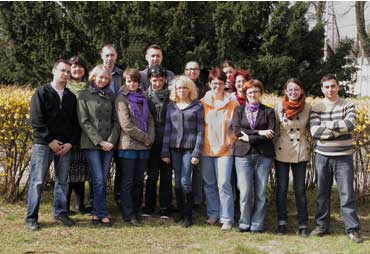
The first founding members of PYG (April 2011)
The main objective of the PYG is to promote increased knowledge about nuclear energy trough organising educational events for a broad range of target audiences. Such meetings have been organised either in schools or in the open air in the form of “scientific picnics.”
Members of Polish Young Generation have already participated actively in other events, such as
The International Year of Chemistry 2011, in Poznań, March, which took place at the Department of Chemistry of the Adam Mickiewicz University (see photos below).
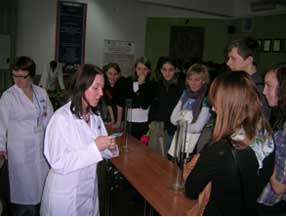
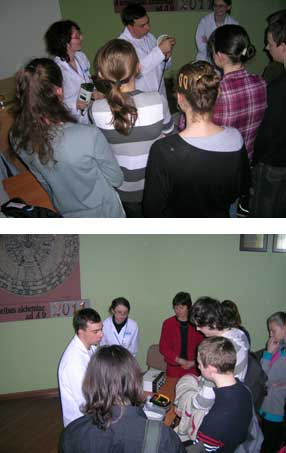
Museum Night 2011, Warsaw - May, at the Museum of Maria Sklodowska-Curie (see photos below)

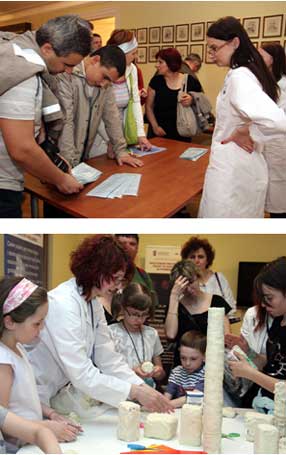
XV Scientific Picnic, 2011 Warsaw – May (see photos below)
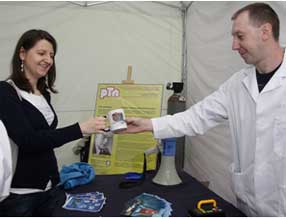
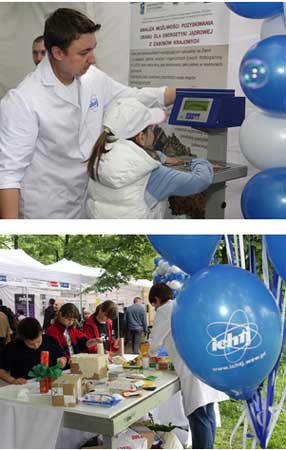
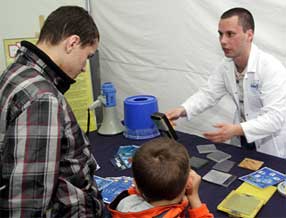
International Year of Chemistry 2011 Warsaw, June, which took place at the Institute of Organic Chemistry and Institute of Physical Chemistry (see photos below)
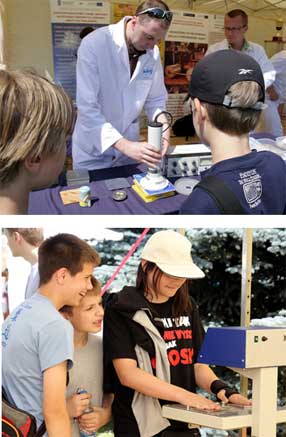
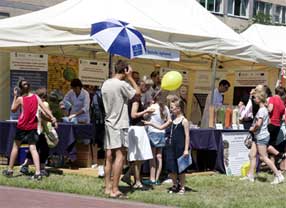
Another important contribution of the PYG is the organising of meetings between young scientists. These include conferences, participation in national and international courses and training sessions and cooperation with organisations that deal with similar issues like nuclear education on both a national and international level.
The motto of PYG is “Nuclear Education”
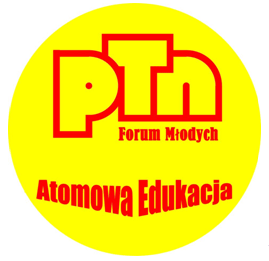
http://www.euronuclear.org/e-news/e-news-34/SYG.htm

In Spain the nuclear fleet, which consists of eight reactors located at six different sites, provides approximately 20% of the country´s electricity output. It represents less than 8% of the total installed power in the country´s electricity generation park.
In 2010, three of the licenses were renewed by the Spanish Government: Almaraz I, Almaraz II and Vandellos II. However, there is one Spanish nuclear power plant - Santa María de Garoña -that is probably going to be shutdown in 2013.
In 2006, they applied for the renewal of its operating license for a new ten-year period. The application was accompanied by a series of studies and analyses whose results confirmed Garoña´s capability for safe and reliable long-term operation. The Spanish regulator issued a favorable report in 2009. However, according to the Ministerial Order of 6 July, the Ministry of Industry decided to renew the operating license only until July 2013, declaring that activities at the plant should terminate on that date.
Jóvenes Nucleares (Spanish Young Generation) wanted to lend its support to the efforts that are being made to try and secure the extended operation of the plant for 10 more years. Jóvenes Nucleares has participated in a number of activities, like “II Nuclear Games,” a sports event that involved sportsmen and sportswomen from all over Spain. A team of 10 people played futsal and ran in a special race that was organised to show solidarity for the objective of extending the lifetime of Santa María de Garoña NPP.
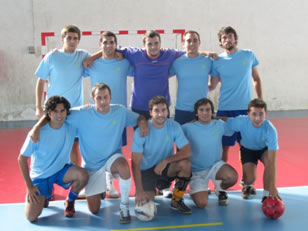
The futsal team of “Jóvenes Nucleares”
http://www.euronuclear.org/e-news/e-news-34/nucnet.htm


Tepco has been building the casing for the plant’s number one reactor since June. The reactor building had been damaged by a hydrogen explosion following the March 2011 earthquake and tsunami that hit the plant.
Installation of the cover was completed on 28 October, Tepco said in a statement. The cover is 54 metres high, 47 metres wide and 42 metres deep. It has a ventilation system that filters out radioactive substances.
Tepco said that during pilot tests, the system removed more than 90 percent of radioactive caesium from the reactor.
The company says the cover will allow it to move nearer to its goal of containing radioactive emissions from the reactor.
Tepco is considering installing similar covers for units 3 and 4, although work cannot start until all debris has been removed, probably during the summer of 2012. Both reactor buildings were damaged by the explosions.
Tepco also said that on 31 October workers reduced the amount of water injection to unit 1 in order to improve the working environment inside the new cover.
The main goal of the work being carried out at the plant is establishing stable cooling and bringing the reactors to a state of cold shutdown.
Three of the Fukushima-Daiichi plant’s six boiling water reactors were in commercial operation at the time of the earthquake and tsunami, and all three suffered damaged reactor cores and partial fuel meltdown.
The NEA said Russia would become the first non-member of the Organisation for Economic Cooperation and Development to join its nuclear agency.
The NEA steering committee for nuclear energy has always backed Russian participation, “notably because of the country's sizable nuclear power programme and the mutual benefit that would ensue from such cooperation,” the NEA’s website says.
Russia has been involved in several NEA activities since the mid-1990s, with Russian experts participating as observers in NEA's nuclear installation safety committee and its nuclear regulatory activities committee.
In 2007 NEA signed a joint cooperation agreement with the country in order to foster research and innovative technology of nuclear activities.
The 12-point action plan, which was approved by the agency’s board of governors on 13 September 2011 and endorsed by all 151 member states last week, requires “immediate follow-up”, IAEA director-general Yukiya Amano said.
The “compact, dedicated team” will work within the agency’s department of nuclear safety and security and will coordinate closely with the director-general’s office for policy.
The action plan says all IAEA member states undertake “a national assessment” of the design of nuclear power plants against “site-specific extreme natural hazards”.
It also says IAEA peer reviews should be strengthened, and that all member states should conduct “a prompt national review and thereafter regular reviews” of their emergency preparedness and response arrangements and capabilities.
Other plans include strengthening the effectiveness of regulators. This would include national reviews of regulatory bodies, including an assessment of their effective independence, adequacy of human and financial resources and the need for technical and scientific support.
The action plan also calls for the strengthening of IAEA safety standards and improvements in the effectiveness of the international legal framework such as the Convention on Nuclear Safety, and the Joint Convention on the Safety of Spent Fuel Management and the Safety of Radioactive Waste Management.
In a statement the IAEA said it has already started implementing its responsibilities under the action plan, including development of an IAEA methodology for stress tests for nuclear power plants. The methodology will be ready in October 2011.
The action plan was based on proposals put forward at a ministerial meeting on nuclear safety in June 2011. Ministers at that meeting suggested that all countries with nuclear facilities should carry out safety audits or “stress tests” based on initial feedback from the accident at the Fukushima-Daiichi.
Meanwhile, United Nations secretary-general Ban Ki-moon has presented a UN “system-wide study” on the implications of the nuclear accident at Fukushima-Daiichi. The UN said the report includes views on how to improve disaster risk preparedness.
“Nuclear energy may well be the future for many nations, but it is important that we develop the strongest possible international safety standards,” Mr Ban said in a UN statement.
http://www.euronuclear.org/e-news/e-news-34/other-conferences.htm


27-30 November 2011
Bansko ski resort, Bulgaria
more
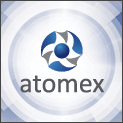
6 - 8 December 2011
Moscow, Russia
more

11 - 16 December 2011 in Makuhari Messe in Chiba, Japan
The venue has been changed from September 4-9 in Aichi, to December 11-16 in Chiba.
Atomic Energy Society of Japan
email: global2011@jaea.go.jp
more

21 - 23 February 2012 at the Dead Sea Resort, Israel
Israel Nuclear Society
email: iorion@bgu.ac.il
more

3 - 6 June 2012 in Zadar, Croatia
email: zdenko.simic@fer.hr
more
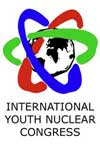
5 - 11 August 2012
Charlotte, USA
North American Young Generation
more

17 -21 September 2012
Como, Italy
more

24 -28 September 2012
Paris, France
more
http://www.euronuclear.org/e-news/e-news-34/Member-Societies.htm

Austrian
Nuclear Society |
Belgian
Nuclear Society |
Bulgarian
Nuclear Society |
Croatian
Nuclear Society |
Czech Nuclear Society |
Finnish
Nuclear Society |
French
Nuclear Energy Society (SFEN) |
German
Nuclear Society (KTG) |
Hungarian
Nuclear Society |
The
Israel Nuclear Society |
Italian
Nuclear Association |
Lithuanian
Nuclear Energy Association |
Netherlands Nuclear Society |
The Nuclear Institute |
Nuclear
Society of Russia |
Nuclear
Society of Serbia |
Nuclear
Society of Slovenia |
Polish
Nuclear Society |
Romanian
Nuclear Energy Association (AREN) |
Slovak
Nuclear Society |
Spanish
Nuclear Society |
Swedish
Nuclear Society |
Swiss
Nuclear Society |
http://www.euronuclear.org/e-news/e-news-34/Corporate-Members.htm
Links to ENS Corporate Members |
AF-Colenco Ltd., Nuclear Technology
Department |
Alpiq Ltd |
Alpiq Suisse Ltd. |
Andritz AG |
Ansaldo Nucleare S.p.A |
AREVA NP |
AREVA NP GmbH |
Atomic Energy Council (AEC) |
Atomic Energy of Canada Limited (AECL) |
Atomepo LLC |
Atomtex SPE |
Axpo AG |
BKW FMB Energie AG |
Chubu Electric Power Co. |
Chilean Nuclear Energy Commisssion |
CCI AG (formerly Sulzer Thermtec Ltd) |
Design Bureau "Promengineering" |
NV Elektriciteits-Produktiemaatschappij
Zuid-Nederland EPZ (Electricity Generating Co. Ltd in the
Southern Netherlands) |
E.O.N Kernkraft GmbH |
Euro Nuclear Services BV |
Electrabel, Generation Department |
Electricité de France (EDF), Communication Division |
ENUSA Industrias Avanzadas SA |
EXCEL Services Corporation |
GE Nuclear Energy |
IEA of Japan Co. Ltd |
Japan Electric Power Information Center (JEPIC) link |
Kernkraftwerk Gösgen-Däniken
AG |
Kernkraftwerk Leibstadt AG (KKL), |
L-3 Communications MAPPS Inc. |
Linn High Therm GmbH |
Elektroinstitut Milan Vidmar |
NRG Arnhem |
NRG Petten |
NUKEM Technologies GmbH |
ONET TECHNOLOGIES |
Paks Nuclear Power Plant Ltd |
Paul Scherrer Institute |
Polimaster Ltd |
|
Siempelkamp Nukleartechnik
GmbH |
SKB (Swedish Nuclear Fuel and Waste Management
Company) |
Studiecentrum voor Kernenergie, Centre d’Etude
de l’Energie Nucléaire SCK/CEN |
Synatom |
Taiwan Atomic Energy Council (AEC) |
Taiwan Power Company (Taipower) |
"Technoatomenergo" Close Joint-Stock
Company |
Teollisuuden Voima Oyj / Industrial Power
Company Ltd (TVO) |
Tractebel Engineering S. A. |
UNESA |
Urenco Limited |
USEC Inc. |
Vattenfall AB |
VNS – Vinçotte Nuclear Safety |
VTT Nuclear |
Westinghouse Electric Company |
World Association of Nuclear Operators
(WANO), |
|
http://www.euronuclear.org/e-news/e-news-34/editorial.htm

Editorial Staff:
Mark O’Donovan, Editor-in-Chief
Contributors to this Issue:
Helmuth Böck ( ANS)
David Dalton (NucNet)
Kirsten Epskamp (ENS)
Krasimir Filipov
(Bulgarian Nuclear Society)
Michael Gerstmayr (ATS)
Georges van Goethem (Euratom)
P. Jacquet (SCK-CEN)
Emilia Janisz (ENS)
Jean-Pol Poncelet (ENS)
Dimitar Popov
(Bulgarian Nuclear Society)
Eileen Radde (ATS)
V. Sanchez (KIT-INR)
Vladimir Slugen (ENS)
Adrew Teller
Vladimir Vladimirov
(Bulgarian Nuclear Society)
Realisation:
Marion Brünglinghaus
Rue Belliard 65, BE-1040 Brussels
Phone +32 2 505 30 50 - Fax: +32 2 502 39 02
E-mail: info@euronuclear.org - http://www.euronuclear.org
The ENS News is a quarterly publication, in electronic
form only.
Copyright notice ©2011 European Nuclear Society.
Reproduction is authorised provided that the ENS News is acknowledged as the
source – except where otherwise stated.
![]()
© European Nuclear Society, 2011